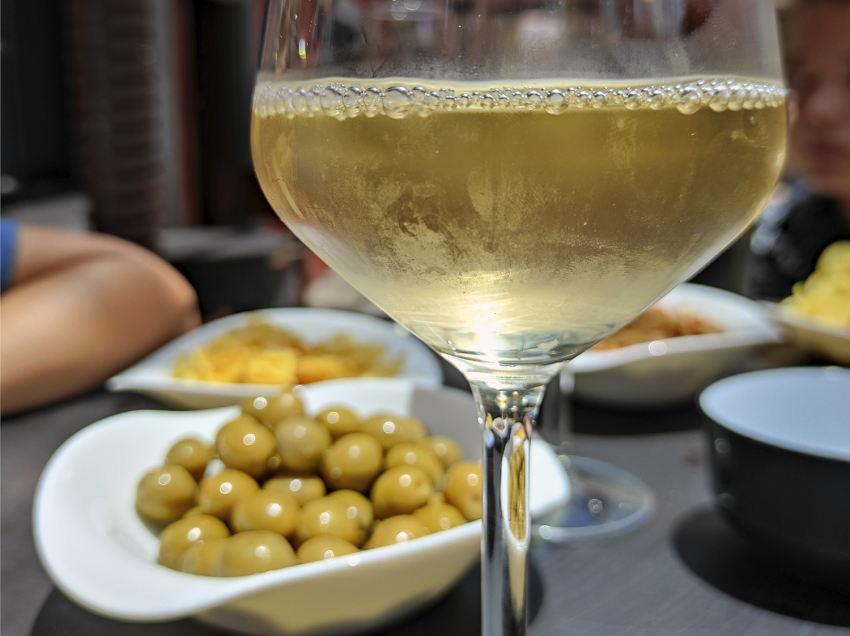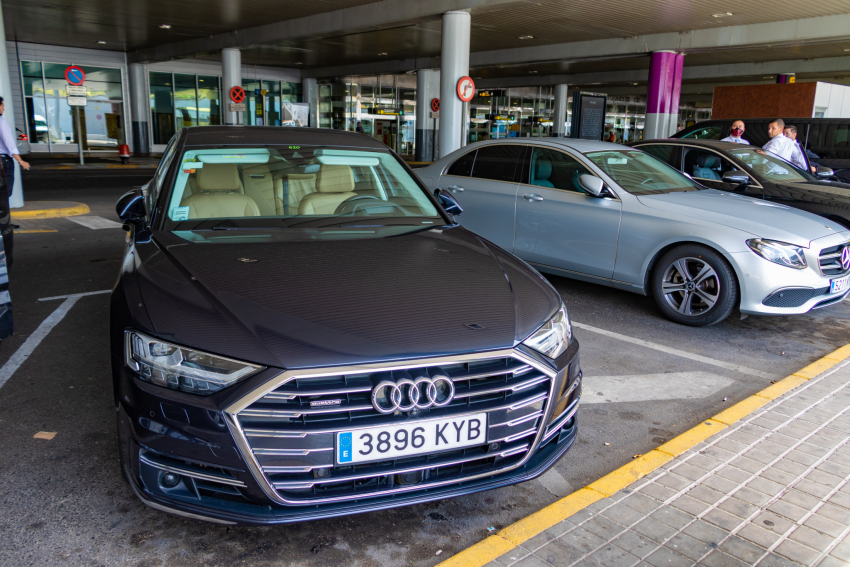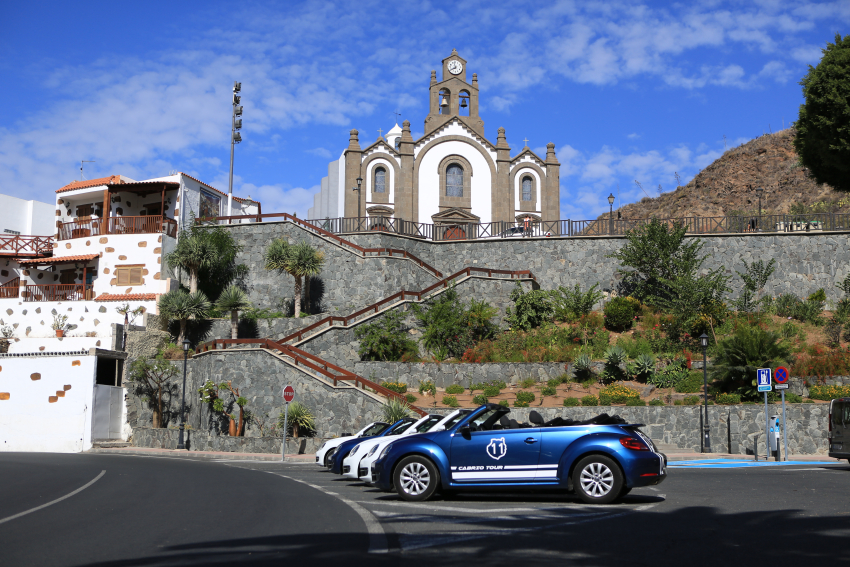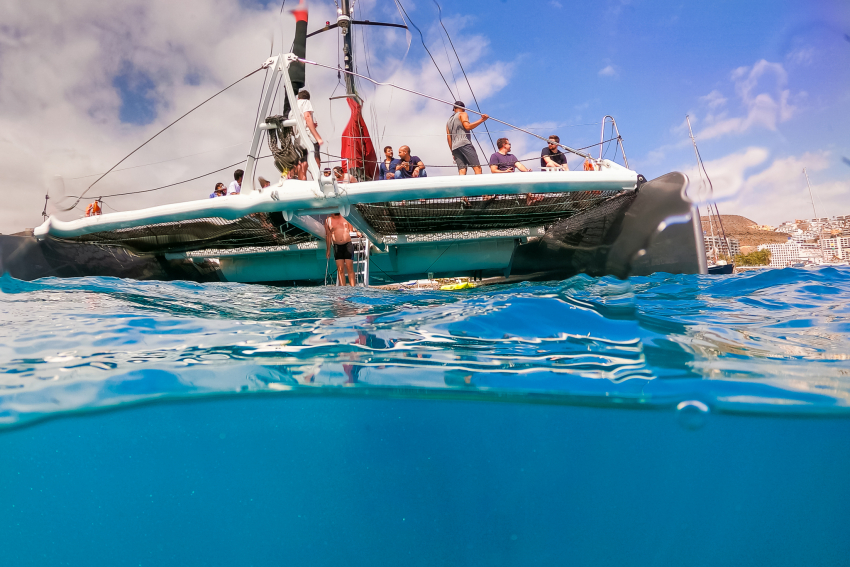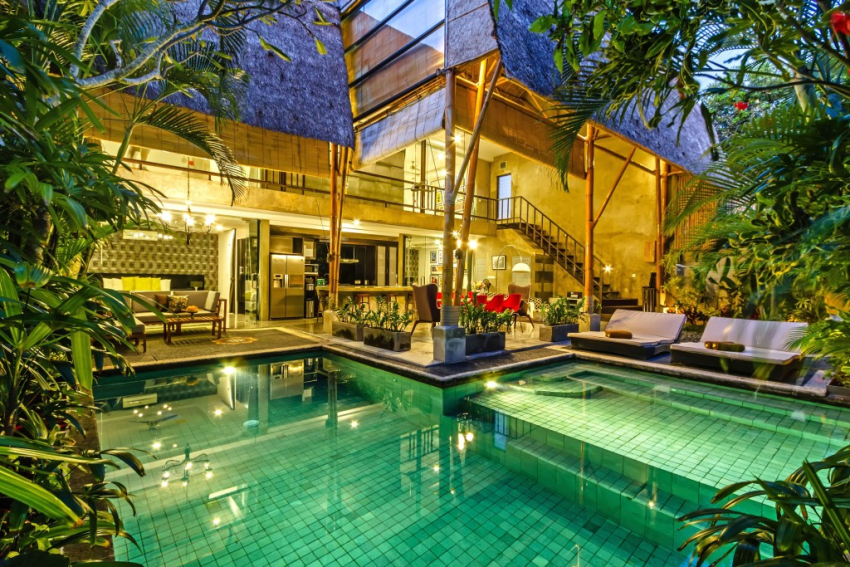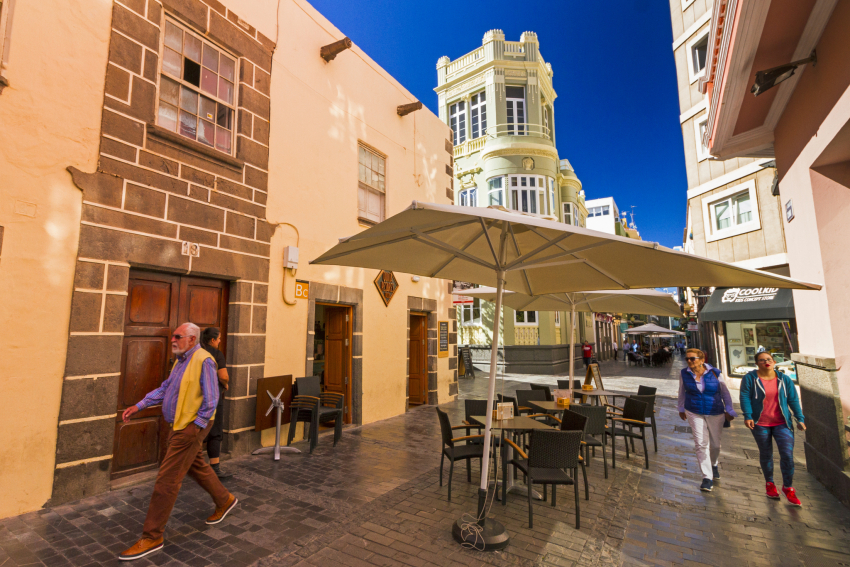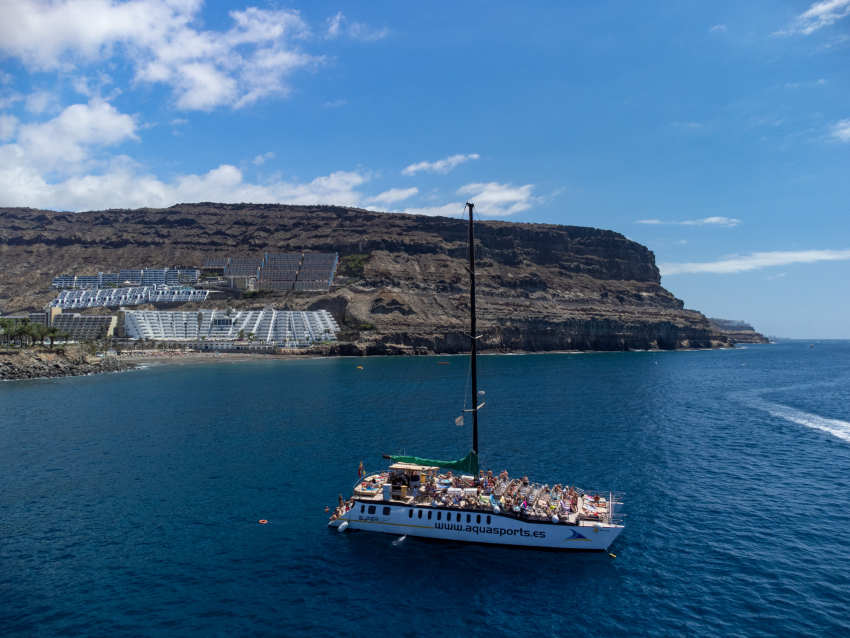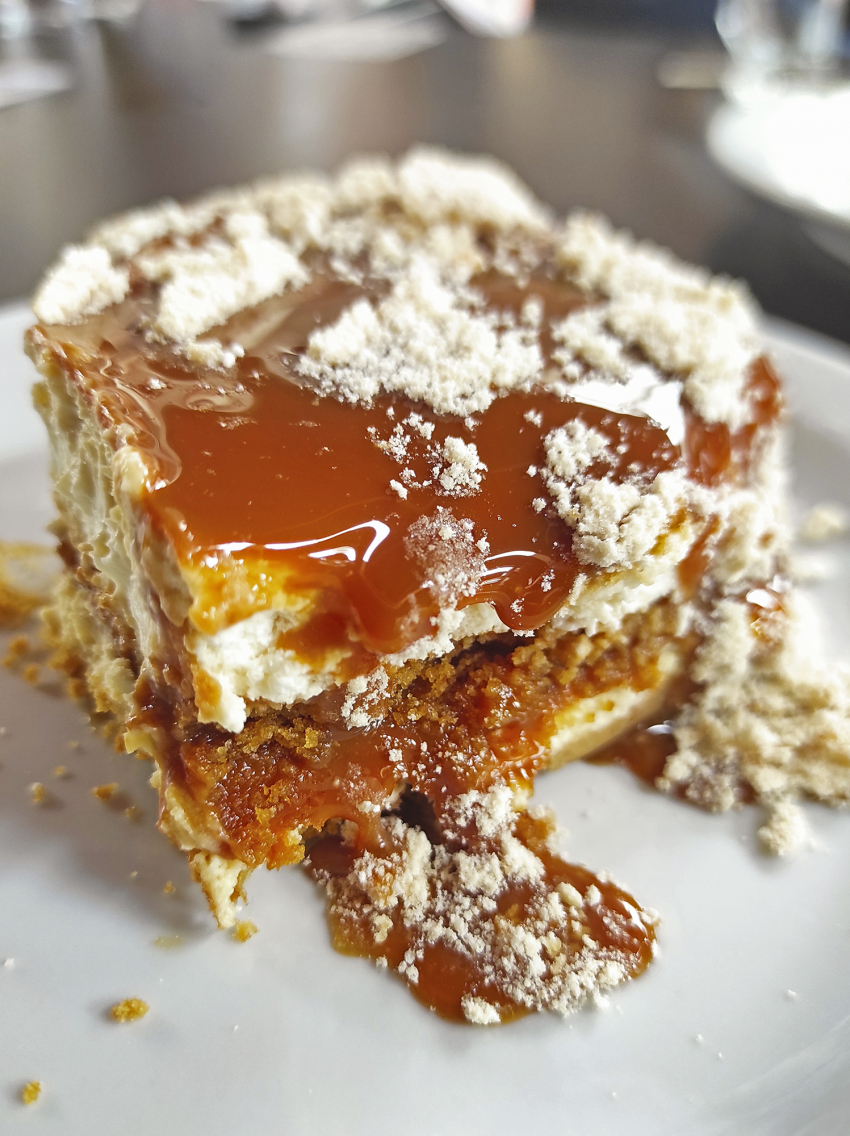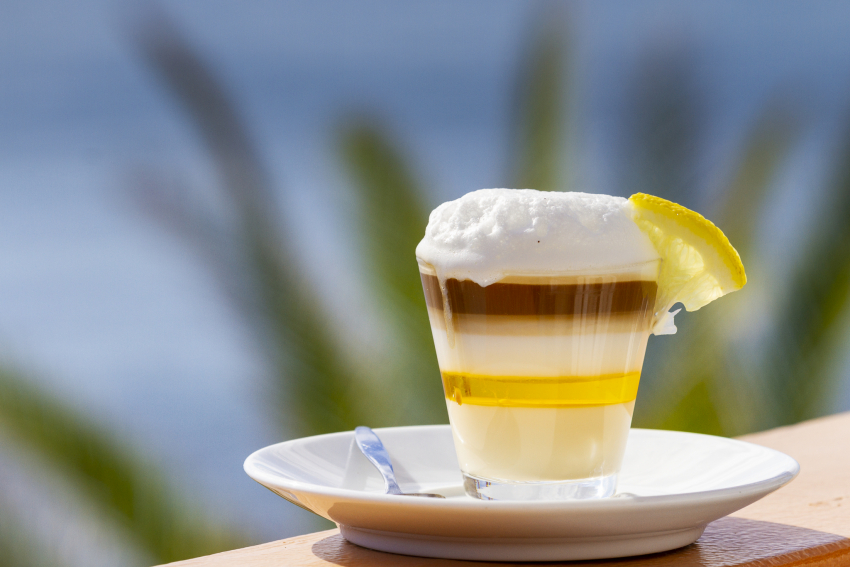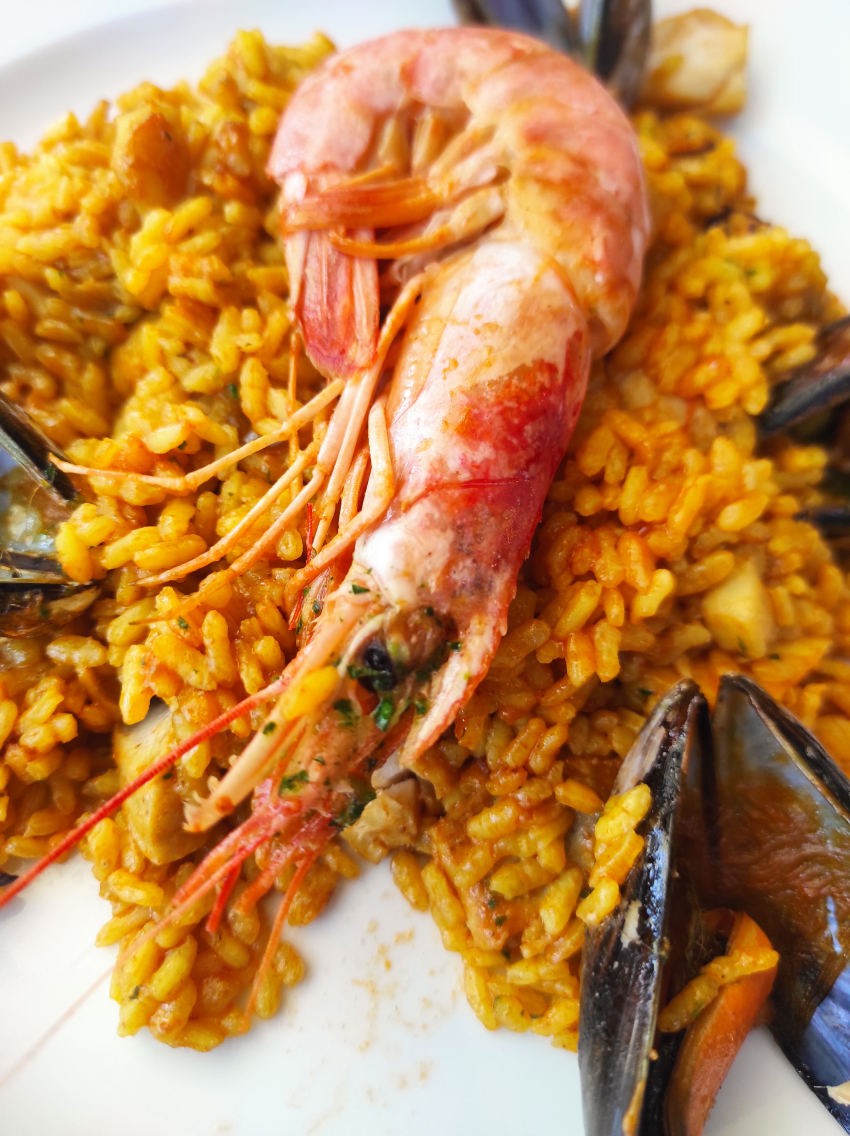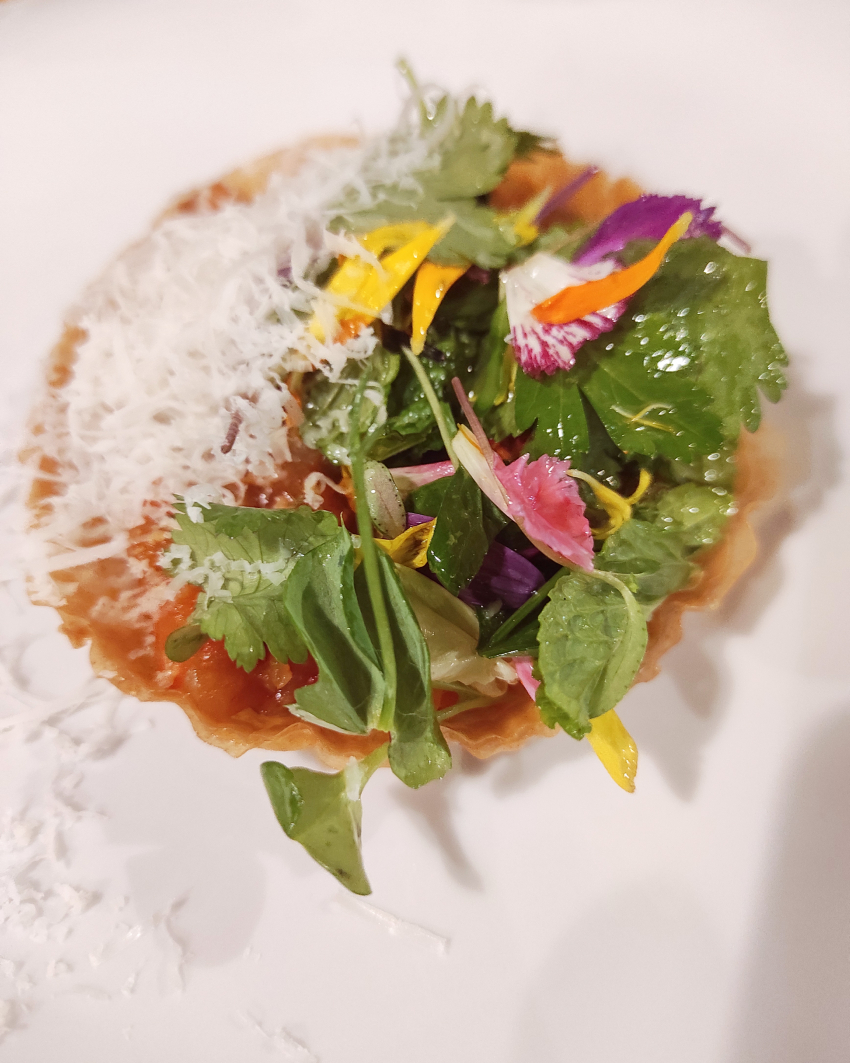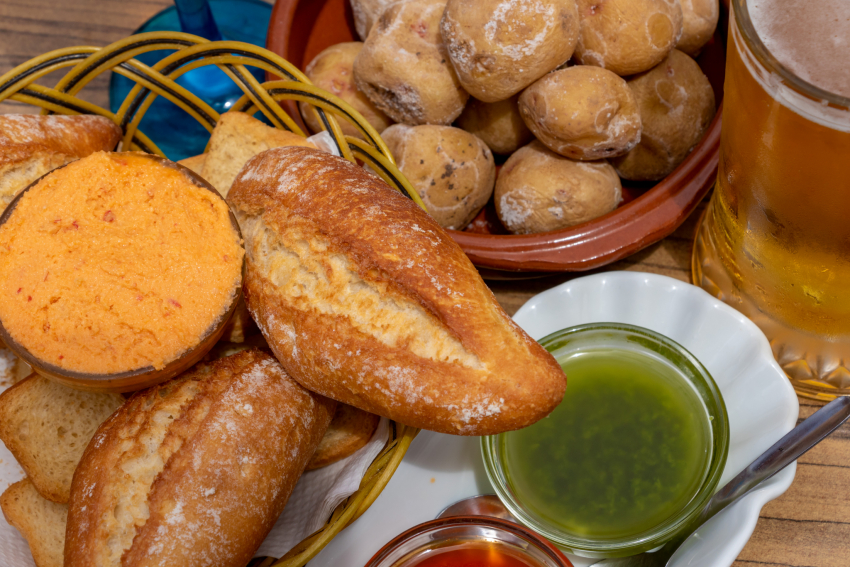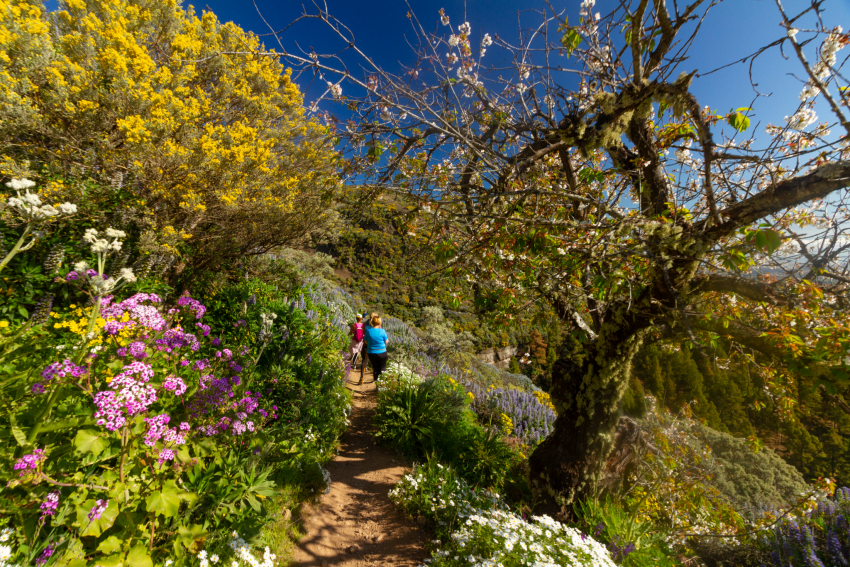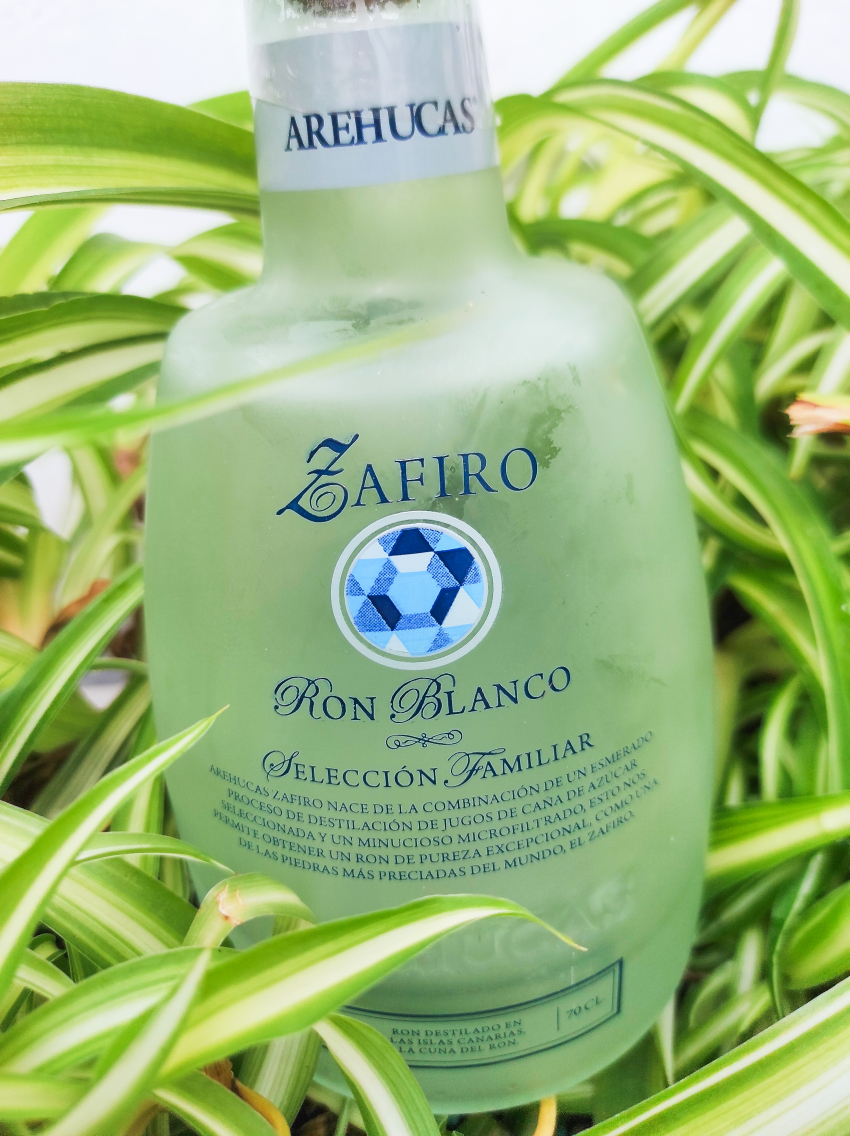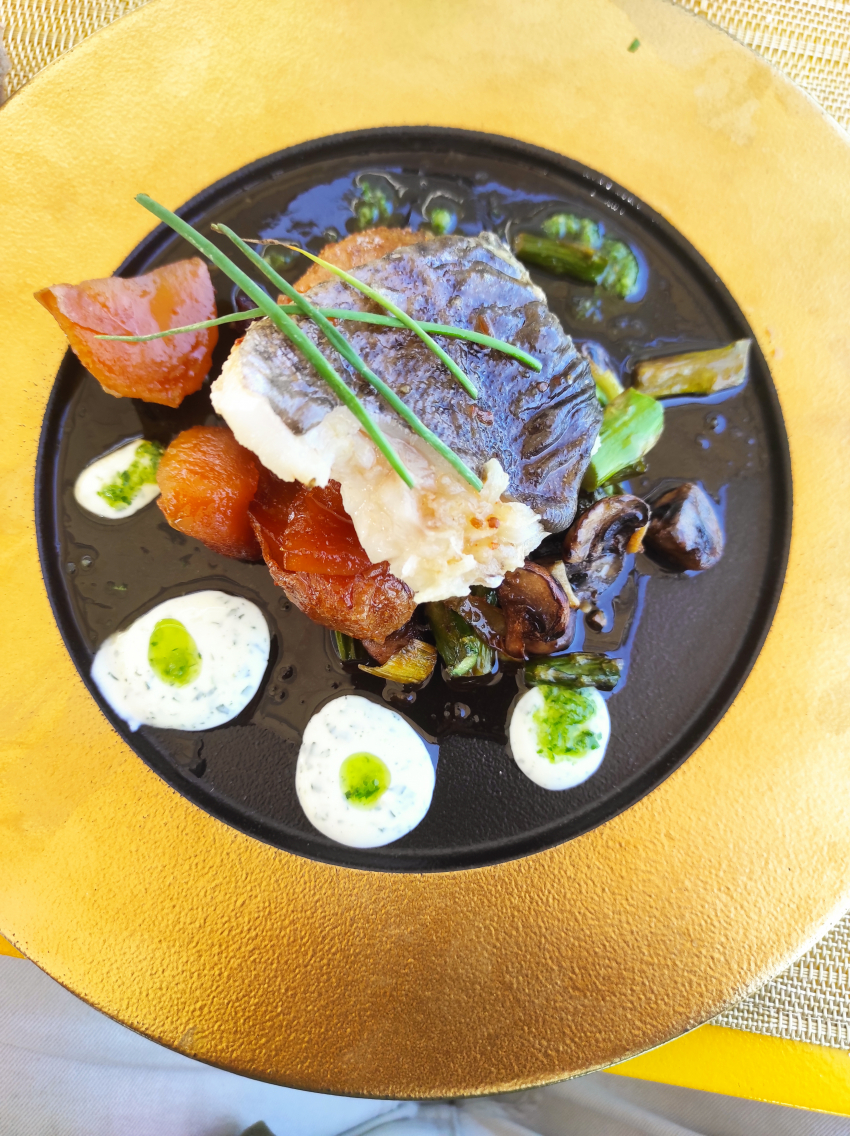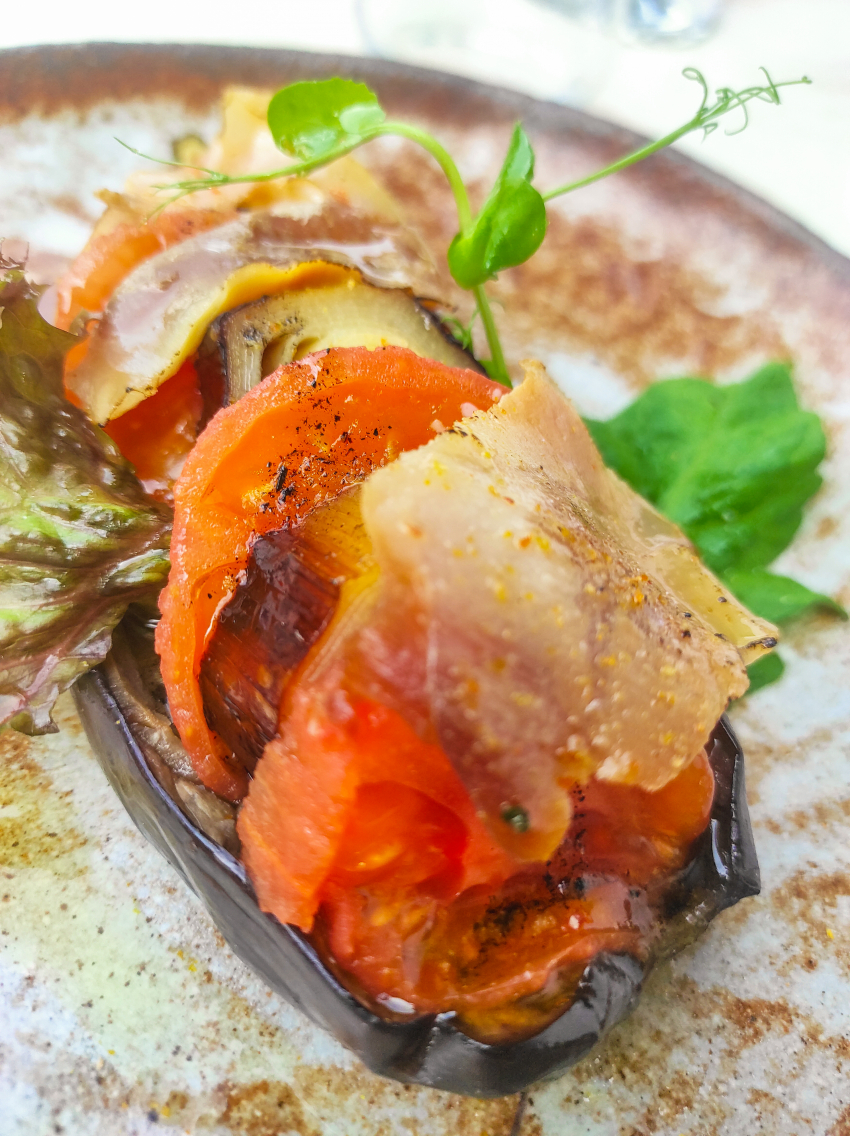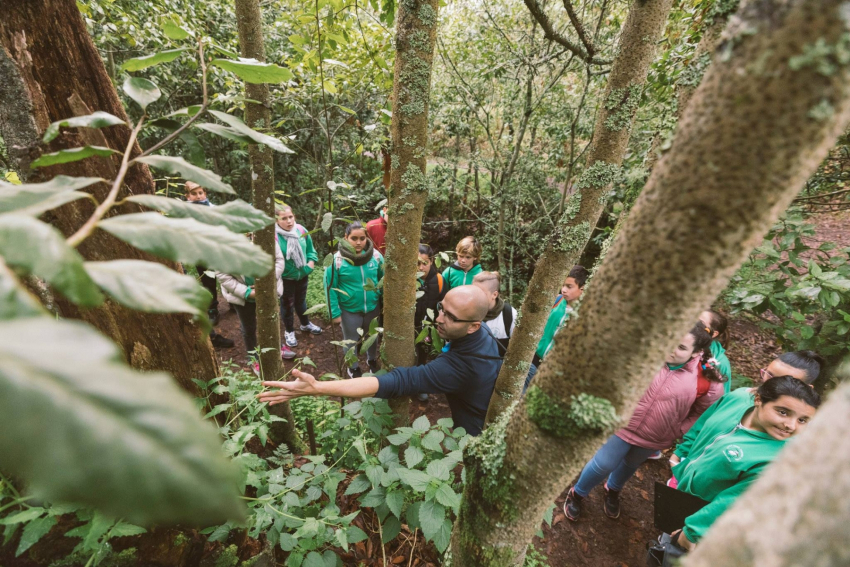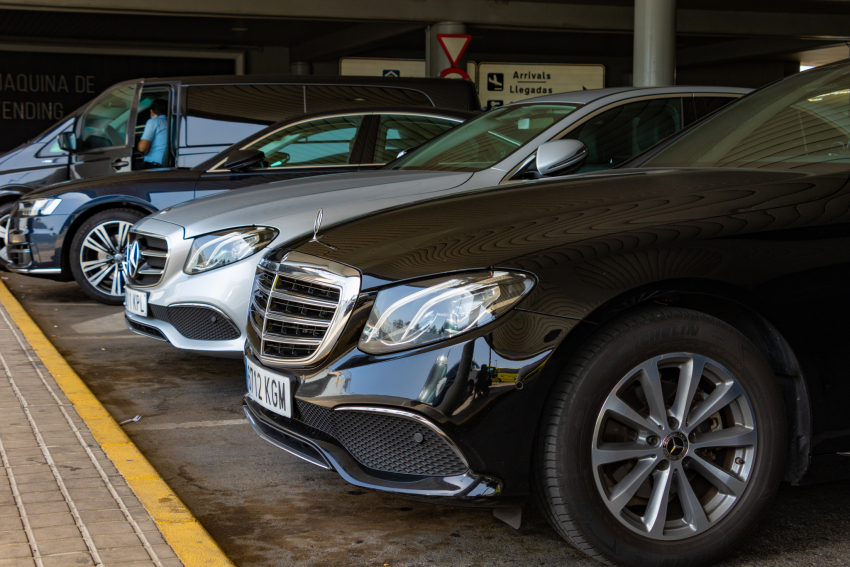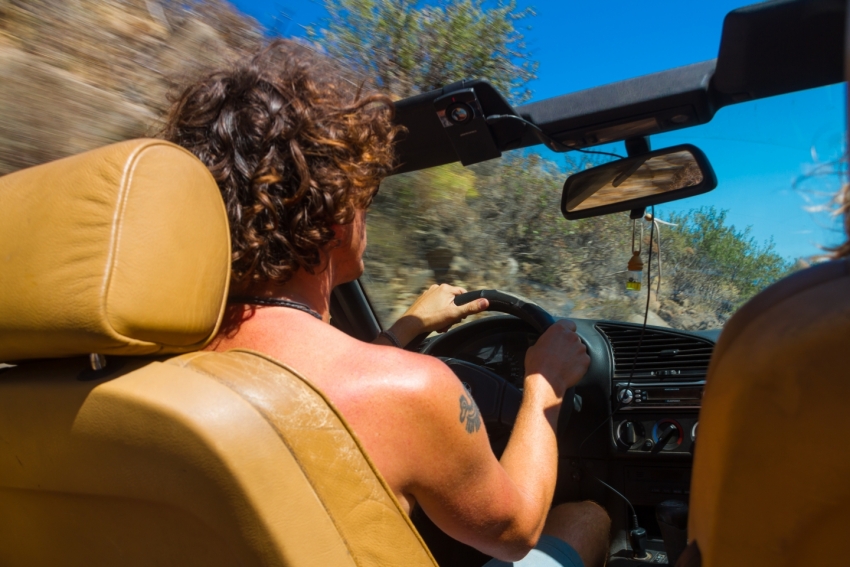Canary Islands wine producers have recently warned about a marketing trick used to sell imported wine as local produce by using Canarian label designs and texts.
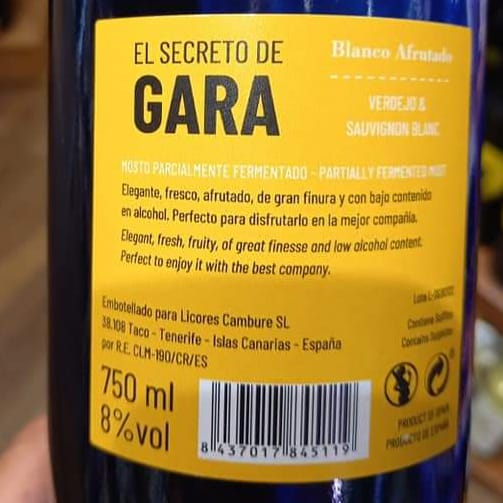 Bottled in the Canary Islands
Bottled in the Canary Islands
A wine that is made from Spanish grapes and imported in bulk can be bottled in the Canary Islands and labelled as "Embotellado en Canarias". With a convincing Canary Islands design on the label, this winer is then sold as if it is local produce in supermarkets and restaurants. The imported wine often uses grape varieties that are also grown in the Canary Islands, such as Malvasia and Albillo, as an added distraction.
Because production costs are so much lower in Spain's vast vineyards, these wines either undercut the local wine producers, or are sold at the same price as authentic Canary Islands wines.
Genuine Canary Islands wine is easy to recognise
This trick depends on people assuming that a bottle that looks like a Canary Islands wine and says bottled in the Canary Islands on the label is a Canary Islands wine.
Fortunately, all genuine Canary Islands wine does have a Denominación de Origen Protejida (Protected Designation of Origin) label system that is easy to spot and guarantees provenance. It's a similar system to the one used to label genuine Champagne or Greek feta cheese.
Real Canary Islands wine have a DO section on the rear label. Gran Canaria, Lanzarote, La Palma, La Gomera, and El Hierro each have an island-wine DO, while Tenerife has five; D.O. Tacoronte-Acentejo, D.O. Valle de La Orotava, D.O. Ycoden-Daute-Isora, D.O. Valle de Güimar, and D.O. Abona. Fuerteventura doesnt have a DO as it only has one wine producer (that we know of).
There is also an Islands Canarias or Canary Wine DO that covers wines made using grapes from more than one island, or from areas of Tenerife that are outside the designated DO zones.
You can see several of these label sections in the image gallery of this article.
Genuine Canary Islands wine, made from grapes grown in the Canary Islands, have one of these DO sections on their rear label. The only exceptions are really local wines made for personal consumption and sometimes sold in local bars and Guachinches.
Protecting Canary Islands wine growers and the countryside
Vineyards and Canary Islands wines have become an important source of income for rural communities and supporting them by drinking local is a great way to keep rural areas vibrant.
There is also no problem if you choose to drink Spanish wine that is imported and sold in the Canary Islands. Spanish wine is excellent and much cheaper than local wine because the vineyards in Spain are huge and mechanised. All wine in the Canary Islands, on the other hand, comes from small vineyards that hand-pick their grapes. Local wine great stuff but you won't find a bottle of Canary Islands wine for less than 10 euros. Decent Spanish Rioja crianza reds, or Albariño whites, start at around six euros.
The problem here is when cheaper imported wine is sold sneakily as local produce and undercuts the local wineries and the local economy.
The practice is dishonest and destructive and we hope this article helps you to avoid being tricked. If you want to try Canary Islands wine, read our Gran Canaria Info wine section, and check the labels.
Gran Canaria's hotels have to be licensed and offer a quality level of service as well as having insurance and complying with fire regulations. The same goes for the boats that take people out to watch dolphins, the companies offering jeep safaris, and even the holiday let apartments.
However, not everybody in Gran Canaria follows the rules. For example, there is a significant industry running illegal and uninsured transfers between Gran Canaria airport and the island's resorts. These cars, driven by locals and foreign-residents, are just private vehicles and the drivers are unregulated and uninsured. They don't pay tax and there is no way to hold them responsible if something goes wrong.
At Gran Canaria Info we believe that all people and all companies offering services to tourists should legal and above board.
So, how do you know that your airport transfer service is legal and registered with the Gran Canaria authorities?
Using legal Gran Canaria airport transfers
It is quite easy to know if your airport transfer service is operating in a legal way because all registered transfers have the following...
A blue license plate: Taxis and other public service vehicles in Gran Canaria all have blue plates.
A VTC sticker in the window: This stands for Vehículo de Transporte con Conductor, the official designation for licensed transfer drivers ans chauffeurs.
An SP sticker on the car: This indicates that the car offer a Servicio Publico or public service and is therefore allowed to pick up and transfer members of the public.
Parked in the transport zone: Official airport transfer vehicles don't park in the public car park of the airport. Instead they have their own parking zone right by the arrivals gates at the airport (next to the taxis and package tour buses). Your transfer driver therefore should not have to pay a parking fee before leaving the aiport.
How to spot an unlicensed transfer service
Unlicensed drivers get away with offerring their service because they claim that they are just members of the public picking up a friend. They are allowed to stand at arrivals with a sign (just like any member of the public can).
However, they also have to park their car in the public car park and will walk you there with your luggage, stopping to pay the parking fee at the meter. A licensed transfer driver does not need to do this because they have their own parking zone right by arrivals.
Some unlicensed drivers don't even wait at the arrival gate because the official drivers recognise them and get annoyed. Instead they have to stand further away (often by the Spar supermarket or the car rental desks).
When an unlicensed driver drops you at the airport they will not want to be paid in a public area because this proves that they are charging rather than "transporting a friend" for free.
An unlicensed car will not have a blue license plate, or a SP or VTC sticker, and will often look like a private car (because it is a private car).
What's the problem with unlicensed airport transfers?
Some people use unlicensed cars because they are the cheapest option and don't realise that they are unlicensed.
There are several problems with unlicensed services. The most obvious is that they are uninsured so if something goes wrong or there is an accident, you are not protected. The price that unlicensed drivers offer is only low because they cut corners (hopefully not literally). You have no way of even knowing if your unlicensed driver has a Spanish driving license, insurance and a good driving record. Licensed drivers are vetted regularly and must be fully insured and licensed to work.
Another problem is that unlicensed transfers undermine the legitimate transfer drivers and businesses in Gran Canaria. Local drivers make a living from transfers and offer a legal, regulated service with minimum standards. Every time an unlicensed service undercuts them, it is effectively stealing from local people and the island economy.
We believe that everybody in Gran Canaria deserves better!
Gran Canaria Airport Transfer Services
To find out more about the Gran Canaria airport transfer, see our Gran Canaria airport transfer article which explains the three different models; man/woman from pub with car, online transfer websites, and local transfer services.
Or you can book a legitimate Gran Canaria airport transfer at a great price right here. Our service uses local drivers and supprts the island economy because all the money you spend stays in Gran Canaria.
Alex Says: Using our service also helps the Gran Canaria Info team to keep providing quality local information here and in our Facebook Group
Explore the beautiful southern highlands of Gran Canaria in this convertible Volkwagen Beetle tour led by a professional and multilingual local guide.
The itinerary takes you along Gran Canaria's most spectacular roads up from the coast to the pretty village of Santa Lucia, then on past the palm trees and into the pine forests arund San Bartolome. There are plenty of stop to take in the view and make sure that the Instagram feed is well nourished. Then you head slowly back down via Fataga and through the Valley of 1000 palms with several more interesting and photogenic stops along the way.
The tour includes pickup in Gran Canaria's main resort areas, plus a picnic lunch. Five people maximum per car. Class B driving license required on the day, driver must be over 21. Start times are flexible and there is more than one tour per day. Ask us for details via WhatsApp using our Concierge service.
This is a stylish and comfortable day out for the whole family (minimum age 4) with the wind in your hair and the sunshine on your skin and you'll see the highlights of south Gran Canaria's beautiful mountains from the comfort and security of a great cabriolet car.

At Gran Canaria Info we have been helping people who visit Gran Canaria to get the most out of their holidays since 1998. We've explored pretty much the entire island and done almost every excursion that exists.
Over 300,000 people follow our Gran Canaria Info Facebook Page and are in our Facebook Group and get useful information about the island every day. This website gets thousands of visit every day.
We also offer a complete Gran Canaria booking service for everyone coming on holiday to Gran Canaria, and we do it in a convenient way via WhatsApp.
You can think of our Gran Canaria booking service like a concierge in your pocket. Just tell us what you want and our local experts, all here in Gran Canaria, will help you choose and book the perfect excursion, buggy tour, or boat trip. We can even deliver a rental car at arrivals in the airport, or to your door once you are settled. And we offer a reliable airport transfer service with registered drivers.
Booking excursions with Gran Canaria Info
If you know exactly what excursion you want to book, just let us know with this fast Whatsapp form. We'll get back to you and confirm the booking right away.
If you want more information about a particular excursion, or need a bit of help choosing between the different optons (which boat trip is best for dolphins, for example), just let is know and you can chat with our Gran Canaria experts via WhatsApp without any obligation to book.
Our concierge booking service is also ideal for large group bookings and for private boat charters that need to be arranged in advance.
To use the service, just get in touch via this easy WhatsApp form.
Car Rental with Gran Canaria Info
We don't even pretend to compete with the low-cost local operators such as Auitoreisen, PlusCar and Cicar so if you want a cheap rental from the airport, use them. Most people arrive at the airport, join a short queue and pick up their car with no problems at all. Occassionally there may be longer queues because there is a lack of budget cars on Gran Canaria: The leasing companies sold off stock during Covid and have struggled to buy replacements now that demand is back.
Lex Says: Don't use the cheapest option on car rental websites because you will fall into this extra charge trap.
The Gran Canaria Info car rental service isn't the cheapest but it is good value and absolutely no hassle. We offer fully comprehensive insurance as standard, airport delivery at the arrival gate, delivery to your door and 24-hour support. We also offer a wide range of quality cars including convertibles, SUVs, luxury vehicles, road bikes, and automatics. If the car exists on Gran Canaria, we can organise a rental for you. Just let us know what you are looking for and the dates and our concierge service will be in touch straight away.
To rent a car with our booking concierge, just fill in this WhatsApp form and we'll be in touch right away.
Airport transfers with Gran Canaria Info
If you just want to walk out of arrivals and straight into your transfer car with no worries about queueing, waiting or looking for the bus-stop, the Gran Canaria Info airport transfer service is for you.
Your driver, fully licensed and insured, will be waiting for you at arrivals with your name on a sign. Then you walk to the designated transfer parking area right by the arrivals gate and off you go to your accommodation.
An airport transfer means that you start your holiday in style from the moment you walk out of ther airport and transfer prices are often equivalent of even cheaper than a public taxi (or even the bus for a large group).
You can book out airport transfer service right here, right now and not have to think about it again until you arrive at the airport.
Rental scams are a growing problem all around the world and especially in places like Gran Canaria where there is always a shortage of properties.
Here’s our guide to the most common scams and how to spot them, plus some tips about how to find a safe rental in Gran Canaria.
You are most vulnerable to scammers if you are looking for property in Gran Canaria for a medium period of time; longer than a month but less than a year. There are less properties rented out like this and demand is high.
Short stays are safer because you book them on Airbnb or Booking.com and see the landlord’s reviews. Long-term rentals tend to be handled by estate agents, or at least come with a negotiated contract and are therefore less vulnerable to fraud. For residential rentals, and yto an idea of prices and standards,start at Idealista.com.
The fake property scam
This is common in the high end rental market because there is a big lack of property with outside space, especially in Las Palmas de Gran Canaria city.
Scammers create an advert on a popular rental portal, or post pictures in Facebook Groups aimed at remote workers and digital nomads.They then take a reservation deposit, take down the advert and disappear.
The key to spotting this scam is to pay close attention to the photos of the property. There should be plenty of them and they should all have the same furniture and fixtures. You can often tell that the outdoor photos from fake listings are not taken in Gran Canaria, or that the property is not typical of the island (Balinese villa, ultra-modern high rise, etc). There are no villas or houses with gardens near the beach in Las Palmas.
Never believe landlords who give you excuses about not having any photos because they are redecorating, etc.
You can also Google search the images to see if they appear in multiple adverts from different places, or appear on property portals (scammers get their photos from estate agent listings).
Multiple deposit scam
We’ve had several reports of this happening in Las Palmas recently and it is also well known in the resorts.
The owner of a genuine property takes several deposits from people who all believe they have reserved it. Then they arrive to find that the property is already occupied and the owner refuses to return the deposit.
To avoid this scam, always ask for a receipt when leaving a deposit and always pay by bank transfer rather than in cash. If at all possible, avoid leaving a deposit until you have seen a property.
The unpleasant flatmate
There is at least one guy in Las Palmas pulling this trick. He rents out a room, with a deposit and rent in advance, in his apartment. As soon as his guests move in he starts to act erratically so that they move out to get away from him and he keeps their money.
Avoid this scam by asking for the contact details of previous tenants.
How to avoid scammers
- Only pay a deposit after you have received a reservation receipt with the contact details and identity number of the landlord
- There is no such thing as a bargain rental property in popular areas of Gran Canaria; you get what you pay for and underpriced properties are cheap for a reason
- Make sure you have the exact address of the property and compare it to the photos using Google Maps
- Ask for the contact details of previous tenants
- Check all photos carefully for coherence and location
- Use landlords who have their properties listed on property portals such as Airbnb and Booking.com and have plenty of reviews
- Come out in advance, stay in an Airbnb and look for property in person once you arrive
- Join local Facebook Groups and ask members if you have any suspicions about a property or a contact
- Be wary of landlords who try and rush you into making a deposit before you have a chance to do any checks
- Never pay more than one month’s deposit in advance
- Trust your instincts if something seems wrong with an advert or odd about a landlord
- Join local groups such as Digital Nomads Accommodation GC and Gran Canaria Accommodation. For more general Gran Canaria Information join Gran Canaria Info and Living In Gran Canaria.
Help I got scammed
We advise you to go to the police with all the information you have. Head to the nearest Policia Local station with all documentary evidence you have.
You can also get a lawyer involved although the cost adds up and you may spend as much as you get back.
However, even the threat of a lawyer or the police is often enough to make a dishonest landlord return your money.
When people come to Las Palmas, they either head to Las Canteras beach, or they wander the cobbles of Old Town Vegueta and Triana districts. Then they do some shopping, often along Calle mayor de Triana, recently voted the best outdoor shopping area in Spain.
However, most people miss the little streets that run off Triana’s high street and this is a real shame. While they lack the big names of the main shopping drag, they are full of small independent shops and charismatic local bars and restaurants.
It’s worth just wandering around these side streets and dipping in to the shops as they sell far more original goods than the big names on the main drag.
Calle Cano: Where old and new Las Palmas merge seamlessly
This pedestrian street is my favourite in the whole historical area of Las Palmas because of how old and new blend together.
If you start at the south end of Calle Cano, the architecture is medieval with squat old buildings with stone doorways and heavy-set doors. Note the traditional wooden balconies on the top floors.
There’s a restaurant right on the corner setting the tone with excellent Spanish ham and traditional food served at outdoor tables.
Casa Museo Perez Galdós: A museum dedicated to a Spanish wordsmith
As you walk north along the street you come to the Casa Museo Perez Galdós set in the splendid old building where Benito Perez Galdós, one of Spain’s most famous novelists and Spain’s leading 19th Century literary figure, was born in 1843.
You don’t have to read his detailed accounts of middle-class Spanish life to appreciate the museum. It’s a beautiful house with internal courtyards, high, wooden ceilings and lots of fascinating information about the author and the period he described so well with his pen.
Art deco and local flourishes along Calle Cano
Further north along Calle Cano and the medieval gives way to the early twentieth century with art deco wrought iron balconies replacing the more traditional wood. The shops here are local in character with hairdressers and even a nursery mixed in amongst the boutiques.
You’re never more than a few metres from a restaurant with outdoor tables shaded by big parasols. One popular place is Mr Kale, a thoroughly modern spot that caters to vegetarians and vegans. It serves healthy smoothies and snacks nd is opposite a boutique selling shoes that cost more than most people’s entire holiday.
The Librería del Cabildo: The best Canary Islands book shop
Or, stay on Calle Cano for the Libreria del Cabildo, a spectacular bookshop with the best collection of Canary Islands books I’ve ever seen in one place. Drop in between 09.00 ands 13.00, or 16.30 to 20.00 on weekdays, and have a browse as you’re sure to find something to read on the beach.
More restaurants, local Spanish food
Calle Cano ends at the Plaza de San Bernardo in a flourish of restaurants serving modern Spanish and traditional Canarian food.
The other side it turns into Calle Viera y Clavijo and the facades slowly become more recent until you reach the beginning of modern Las Palmas. There’s a lovely sushi hole-in-the-wall, a Bang and Olufsen store, and plenty of clothes and shoe shops to keep you occupied.
Viera y Clavijo is lined with Jacaranda trees so if you in Las Palmas in early summer the street is carpeted in electric mauve flowers.
At any point you can drop down one of the cobbled side streets and come out on the much busier and commercial Calle Mayor de Triana for a hit of contemporary high street fashion. Or, head a block up the hill to Calle Benito Perez Galdos for what is Las Palmas’ most hipsterish street with its home decoration boutiques, tattoo parlours, and a cluster of vegan and upmarket restaurants.
Keep walking south along Benito Perez Galdós and Calle General Bravo and you get back to the pretty Plaza del Cairasco with its tall palm trees and outdoor cafes. From here you are just a couple of minutes walk away from the Cathedral and the museums and galleries of Old Town Vegueta.
Article published originally on the excellent Hello Canary Islands website.
A Gran Canaria boat trip is a must for many people visiting the island but there are lots of options, and so many people selling tickets for them, that it's tricky to know which one is the right one for you.
After all, one person's banging party boat is another's noisy nightmare on the water. So, yo make sure you have the perfect day, here is the Gran Canaria Info guide to choosing the best Gran Canaria boat trip for you. Allthe boats mentioned here do pickups from all the main Gran Canaria resorts.
What sort of Gran Canaria boat trip are you after?
A good boat trip is a great Gran Canaria day out but the wrong boat can be an expensive headache. So, to make sure you choose the right trip, first decude exactly what you want out of your day on the water?
The most popular day trips are the large charater catamarans like the Sagitarius Cat, the Afrikat, or the Volcanic Party boat. These are big boats with lots of atmosphere and a fun atmosphere. Great if you want to socialise and party out on the water.
For a more tranquil day out, choose on of the smaller catamarans or speedboats such as the Exclusive Boat or the Blue M Yacht.
If what you realy want to see is dolphins swimming free in the ocean, you have a couple of good options. The two hour dolphin-watching trip on the Supercat has a great track record of finding the dolphins but is a big, busy boat that isn't for everyone. For a quieter and more intimate experience, use a smaller boat like the Exclusive Dolphin Search Charter, or the Blue M Yacht Luxury Dolphin Search Charter.
Ask a Gran Canaria expert before you book
At Gran Canaria Info we want everyone to have a good time here on the island. So, we have a personal booking service that lets you ask our local experts which boat trip is best for you. It's all done by Whatsapp so you don't have to spend any money on calls, or worry about data. All you do is fill in a super-simple enquiry form telling us what you want to do and then our local experts will be in touch to help you choose the right boat. Our local experts have tried all the boat trips we sell and know everything about them.
Booking the perfect boatv trip via Gran Canaria Info really couldn't be any easier and it guarantees that you have the best possible time on board.
Gran Canaria's unique dessert, the Polvito Uruguayo, is on most dessert menus in Las Palmas and is now even served in some resort restaurants.
The history of the polvito uruguayo
Despite the name, it was invented in Las Palmas at the El Novillo Precoz restaurant by the Uruguayan owners. The restaurant is still there and still one of the best meat restaurants in Gran Canaria. If you stay in Las Palmas you really should go there and let the experienced waiters tell you what meat is best for you (they always know).
The polvito at El Novillo is a very light pudding made from layers of whipped cream, dulce de leche, biscuit crumbs, ground almond and crushed meringue. It is deliberately light because who wants a big stodgy pudding after eating a good steak?
From its origins on Calle Olof Palme the polvito has now become the one of the Gran Canaria dessert trinity along with flan de la casa and mousse de gofio.
The best polvito in Gran Canaria (so far)
To find the best polvito, head from one Las Palmas classic to another; the Bodega Extremeña right by the beach on Calle Franchy Roca. This small and resolutely traditional restaurant serves up some of the best Spanish food in Las Palmas from quality ham and cheese to tasty tortillas.
Try the range of slow-cooked meats served with mashed potato so tasty that you can eat all on its own that is the highlight of the menu. And of course, the polvito!
At Bodega Extremeña it is deeper and more substantial than the original and skips the almonds. However, it is still light enough to eat after a heavy dose of meat and mash.
If you try it and know of a better one, please let us know where to go...
The delicious Barraquito coffee was invented in Santa Cruz de Tenerife at some point in the early 20th Century but like all good legends, its exact origins are nebulous.
Some say a man nicknamed Barraco breakfasted in the bar Imperial and always asked for a carajillo (espresso with booze in it) with a difference. Followers of this origin story spell the name with a capital B. Others are convinced that a waiter at the nearby Los Paragüitas bar invented the Barraquito on a slow day. The recipe is also attributed to a Mr Manolo Grijalbo who created it for his bohemian clients at a long forgotten bar over the road from the Santa Cruz casino.
Meanwhile, some in north Tenerife add extra Licor 43, call the barraquito a zaperoco, and insist that it originated in Puerto de La Cruz and has been hijacked by the capital city. The response from Santa Cruz is always, "pfff, they just say that for the tourists".
The one thing that everyone in Tenerife agrees on is that the Barraquito is completely different from the cafe Asiático from Cartagena in southern Spain. The Asiático is made from exactly the same ingredients in exactly the same way but is, of course, a completely different drink. The fact that Licor 43 is made in Cartagena is neither here nor there: There is no firm evidence about which of the two appeared first as both seem to date to the 1930s or 1940s.
Anyway, enough of this historical nonsense.
How to make a Barraquito coffee
The Barraquito is made from five ingredients layered up like a 1980s cocktail.
It is served in a glass, like a standard Canary Islands cortado or cortado largo. These days it also comes in a wide array of rather silly vessels ranging from mini beer steins to champagne flutes.
Be as camp as you like with the glass, but stick to the original recipe to get the right flavour at the end:
The bottom layer is a shot of condensed milk.
The second a half shot layer of Licor 43, a sweet Spanish liqueur.
The third a shot of piping hot espresso coffee.
The fourth a shot of hot milk.
Top up with milk foam to create the fifth layer.
Dust the top with cinnamon and add a strip of zest from an unwaxed lemon.
The idea is that you mix all the layers together and drink your Barraquito like a normal coffee.
Instagram rather than instant coffee
In our seminal guide about How to order coffee like a local in Gran Canaria we don't even mention the Barraquito because, somewhat inexplicably, it wasn't a thing here until recently. Lovers of sweet, layered coffee in Gran Canaria had to make do with the leche y leche, a measly two-layered effort made with condensed milk and milky coffee served with extra sugar on the side rather than cinnamon and lemon peel.
However, the Barraquito is now here to stay on menus at touristy bars and cafes all across the island. Even the locals are indulging along the Las Canteras beachfront in Las Palmas. It is the banana split of the 2020s and makes people ooh and aah and dream of Instagram fame.
The good thing about the Barraquito is that it is delicious as well as Grammable. The unlikely sounding combination of ingredients combine well and you get a lovely hit of rice-puddingy coffee sweetness.
Just remember to drink it hot as it gets a bit gloopy if you spend too long photographing it.
When you take your first sip don't forget to thank Barraco, or Mr Grijalbo, or that anonymousTenerife waiter, for coming up with the original recipe.
The single most common question we get in the Gran Canaria Info group is...
What is the weather going to be like during my holiday?
The answer is almost always the same: If you are going to south Gran Canaria's resorts, it is very likely to be sunny every day. Yes, even in the winter. Yes, even though your weather app says it is going to be cloudy. Yes, even in January. And in February, etc.
Obviously it does sometimes rain in Gran Canaria, even in the sun-baked south, and there are occassional cloudy days.
To check for these rare rain and clouds there is no point using generic weather apps because they use data that averages out the weather and temperature across Gran Canaria.
This means that the forecast for Puerto Rico and other resorts includes weather and temperatrure predictions for inland and highland areas that are cooler and cloudier.
So, instead of believing your current weather app use the Spanish weather service website called the AEMET. It's website has detailed and very accurate forecasts for individual resorts, town and even beaches.
Here's the forecast for the Mogán area including Puerto Rico.
The mobile website works very well in English although the app is only in Spanish at the moment.
Rather like tapas, paella isn't a traditional dish in the Canary Islands and finding a good one in Gran Canaria has always been difficult.
Proper paella is not pukka
Proper paella hails from the Valencian region and is made from chicken, rabbit and snails. What visitors think of as paella, yellow rice with prawns, mussels and calamares, is actually a completely different dish called arroz a banda.
The Valencians are quite defensive about the origins and authenticity of paella because it is one of the most abused dishes on Earth.
Proper paella is two grains of rice thick, not bright yellow, and each mouthful is a blast of flavour. The stuff you get in most Gran Canaria resort restaurants, and even local restauarants, is a long way removed from the real thing. In fact if you find paella on a restaurant menu and the waiter doesn't warn you about how long it will take, you know it's coming out of the freezer.
Proper paella in Gran Canaria
Paella takes a while to cook so most local restaurants only do it on Sundays. Even when they do it tends to be too thick and bright yellow to be authentic. These local paellas can be delicious but are never quite as good as the real deal.
To try the real deal, find local restaurants called arrocerias which specialise in rice dishes. The most accessible in south Gran Canaria is El Caldero along the Meloneras strip. This serves paella, and arroz a banda, cooked over flames with the right amount of rice and spices (as you can see from the photo, it isn't bright yellow). If you feel adventurous, try the black rice (cooked and coloured with squid ink).
Alex Says: Paella servings At El Caldero are generous so four people will struggle to eat "paella for four". It's best to order paella for two or three, especially if you order starters.
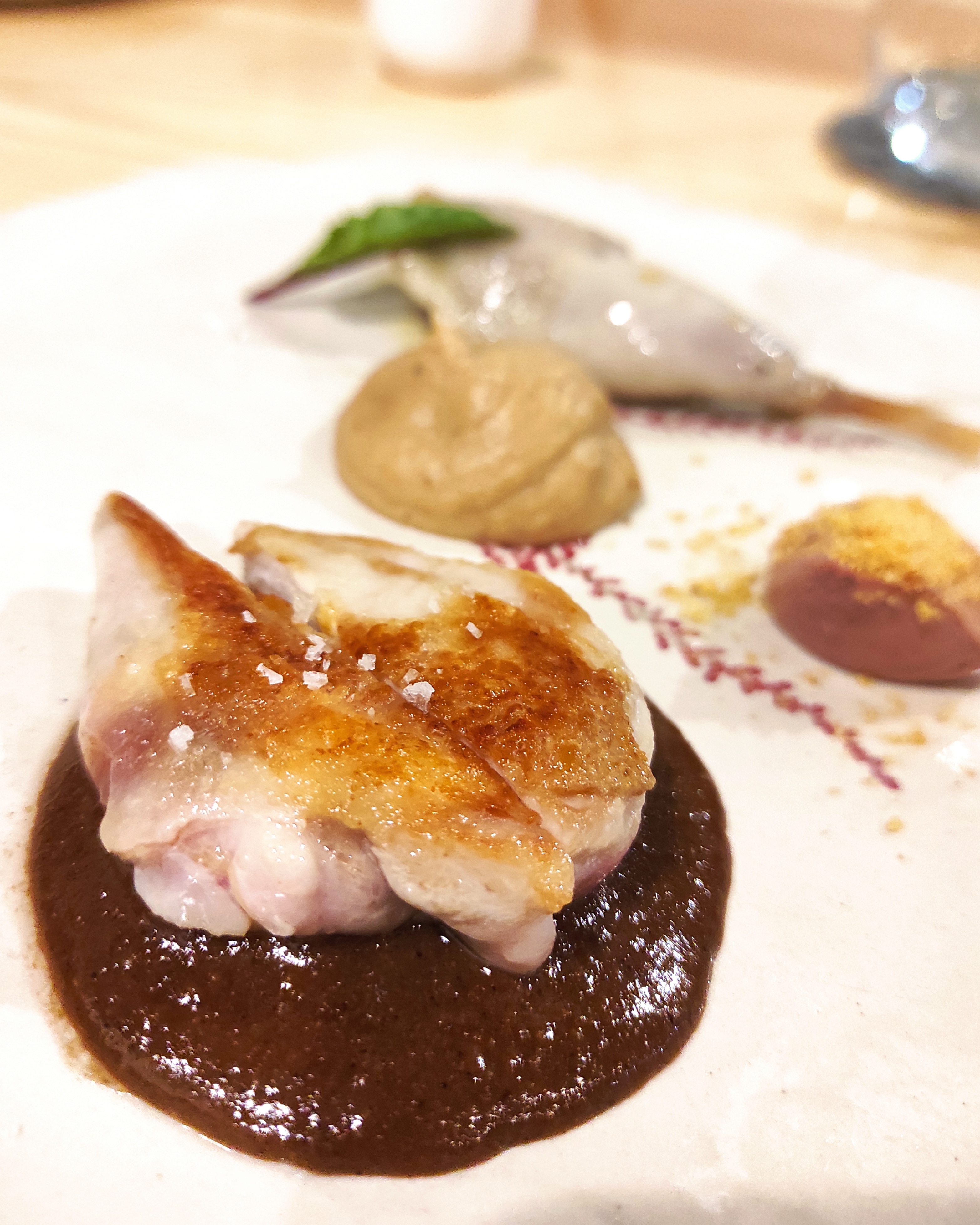 The tasting menu has now established itself in Gran Canaria. Every restaurant with a even a distant dream of getting in the Michelin guide, let alone bagging a star, has a multi-course extravaganza on the menu. In exchange for most of the contents of your bank account they give you seven courses (if you are lucky), three desserts, and wines to match.
The tasting menu has now established itself in Gran Canaria. Every restaurant with a even a distant dream of getting in the Michelin guide, let alone bagging a star, has a multi-course extravaganza on the menu. In exchange for most of the contents of your bank account they give you seven courses (if you are lucky), three desserts, and wines to match.
The trouble with this extravaganza of flavours is that, like a night out at carnival, it can overwhelm the senses and the stomach. A little bit of a lot of things can be extremely filling, especially if washed down with a wide variety of wines. That said, tasting menus can also be a good way to find out what a restaurant offers without working your way through the whole menu.
Hestia: Las Palmas tasting menu
We headed to Hestia to try their tasting menu with empty tummies and high expectations as several friends have recommended it as amongst the best in Las Palmas.
The restaurant is tucked away on Leon Tolstoy close to the beach. All tables are indoors but that's not a problem on a March evening in Las Palmas. It's decorated like all smart restaurants are decorated at the moment: A a nod to mid-century modern, a vintage touch, a pop of pastel colour, and that round Ikea mirror with the Mobius strip frame that is everywhere. All perfectly pleasant without giving anything away about the origins or inspirations of the chef.
There isn't much more information online or on social media. Rather enigmatic, or maybe we just don't read the right magazines. Anyway, here's the young chef's Instagram and here's Hestia on Facebook.
The tasting menu at Hestia in Las Palmas
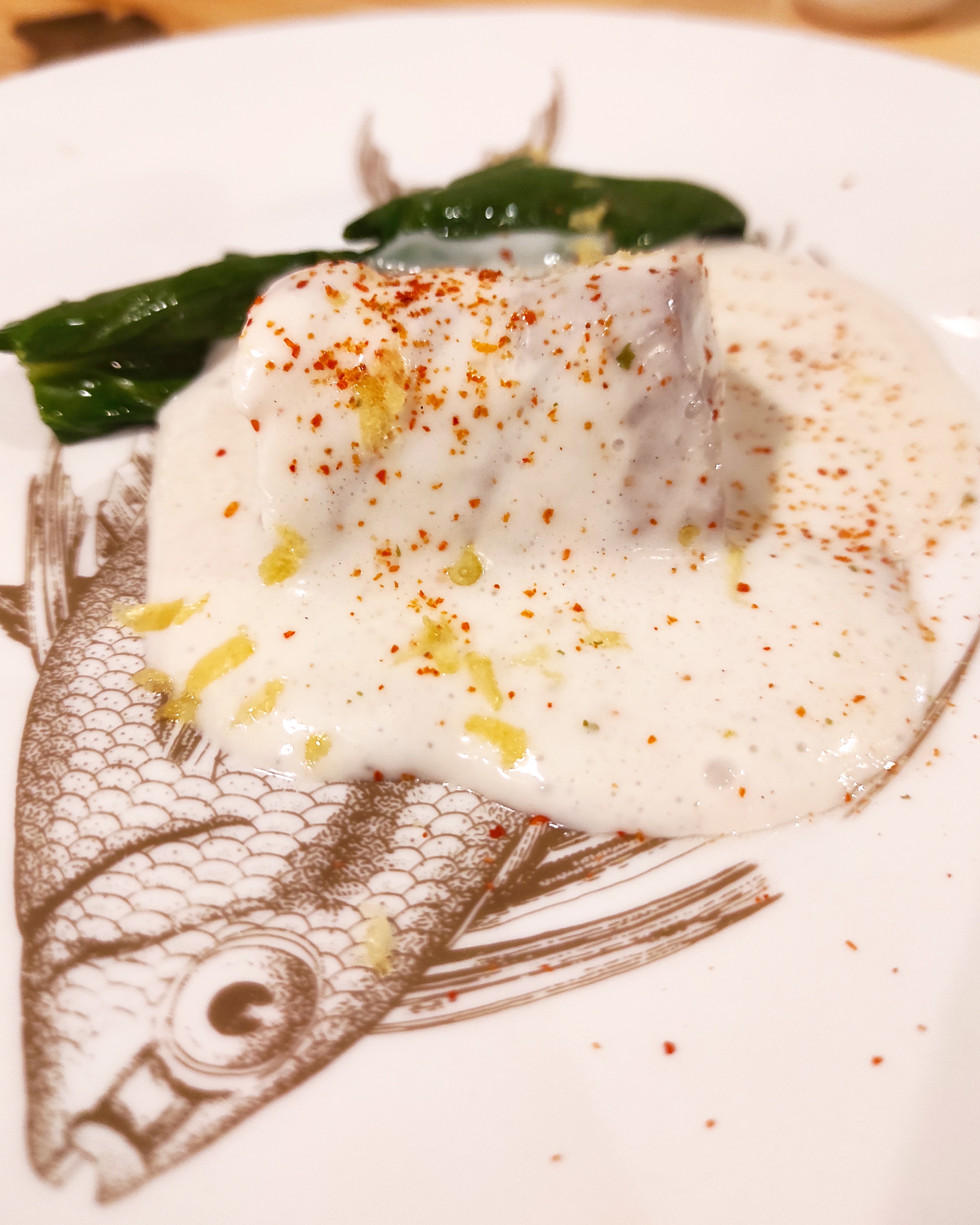 We opted for Hera, the shorter of the two tasting menus.
We opted for Hera, the shorter of the two tasting menus.
First up, tasty welcome snacks with instructions about the order to eat them in (pet hate).
Then, a vegetable tartlet with local goat cheese. Thin, crispy pastry but not quite enough of the sharp cheese to offset the rich filling.
A smoked risotto with boletus mushrooms, green beans and pine nuts that was superb.
Marinated amberjack (it was tuna on the night) with tomato sorbet. Well balanced, if unnervingly cold.
Slow cooked seabass in coconut and lime bechamel which was possibly the best bit of fish I've ever eaten.
A medley of partridge; breast, pate and leg; all tasty and well dressed.
The first dessert was a dense chocolate mousse with forest fruits and two blobs of what seemed to be HP Sauce.
The second desssert a delicious banana cream millefeuille with manadarin sorbet
The petit fours were yummy, especially the mini Oreo.
Each course served with a small glass of wine including a dry white from Los Berrezales in Agaete, a great sweet Madeira, a sake, a cava, a Spanish red, and the lingering dread of an inevitable fuzzy head the next morning.
The service was friendly and prompt and the explanations of each dish brief and useful.
To Hestia or not to Hestia
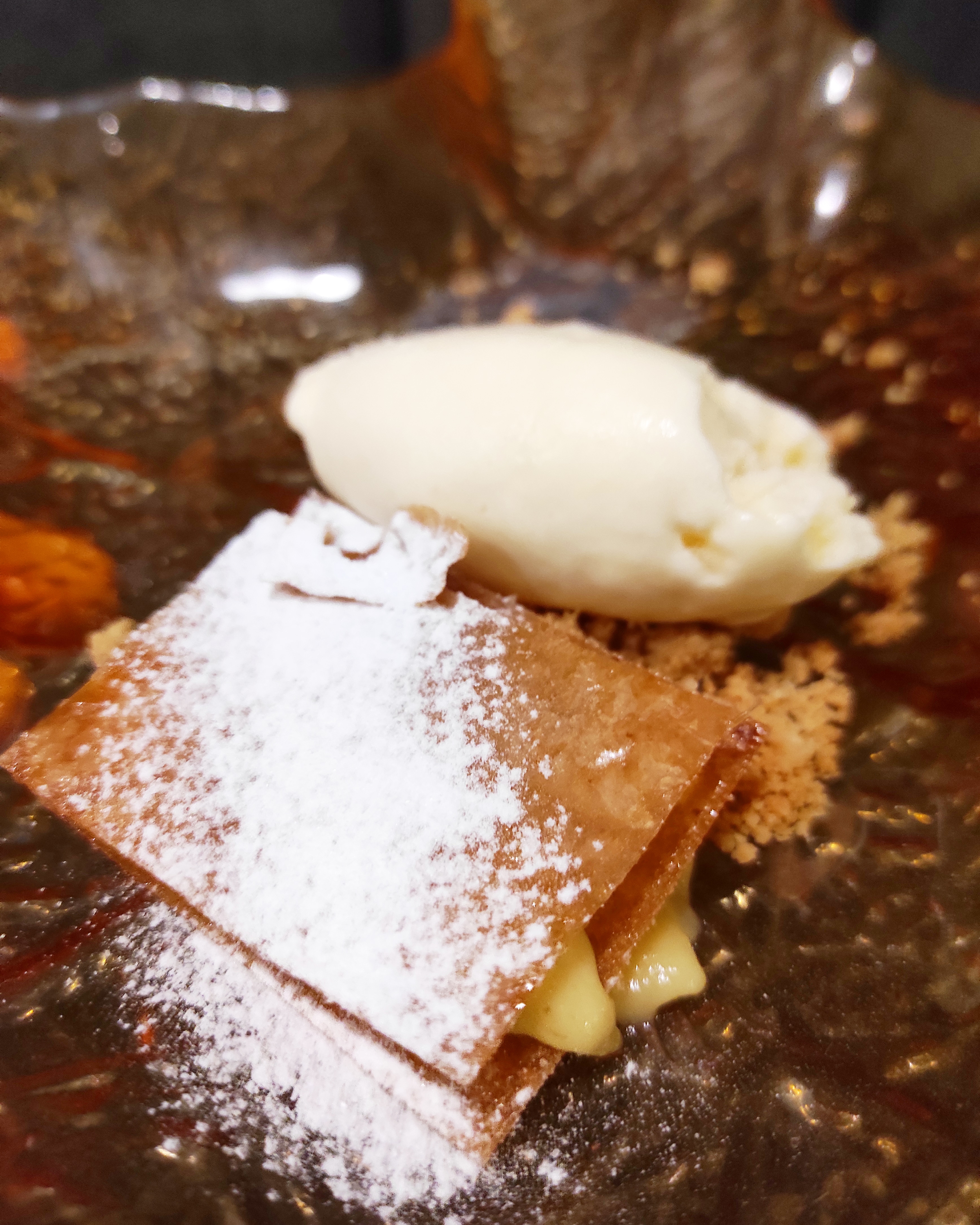 This is a quality restaurant that uses top notch ingredients and puts a lot into every dish it serves. The Hestia tasting menu (59 euros) plus wines (39 euros) was good value. Individual dishes on the menu range from 15-25 euros.
This is a quality restaurant that uses top notch ingredients and puts a lot into every dish it serves. The Hestia tasting menu (59 euros) plus wines (39 euros) was good value. Individual dishes on the menu range from 15-25 euros.
The smoked risotto and the coconut seabass were top notch. The chef also deserves kudos for making something delicious out of cooked banana because it's a tricky thing to pull off. There was also a pea pasta with Spanish ham sauce and sage oil that sounded delicious and we'll be back to try it.
We'd definitely recommend Hestia as a tasting menu option for a couple, or foodie group, in Las Palmas.
One of the first things visitors arriving in Gran Canaria ask us is where they can get the best tapas. The answer isn't easy because there is no such thing as tapas and tapas restaurants as they exist in people's minds.
The tapa exists of course (although it can also be called a pincho) but there are no tapas restaurants in Spain outside of tourist resorts.
The tapa in Spain
Bars in Mainland Spain serve an individual free tapa with every drink knowing that make people more liklely to stay for another one. But, unlike the Greeks with their meze, the Spanish never sit down at a restaurant for a table full of little plates of tapas.
In the Canary Islands the tapa itself isn't regarded as a local thing. Nor, for that matter is paella which is from Valencia.
There are Spanish bars and restaurants in many towns and in Las Palmas that do serve tapas as part of their menu. Look out for jamonerias which do tapas and Spanish ham by the plate.
Vegueta Old Town in Las Palmas hosts a weekly tapas night on Thursdays but the focus is more on volume than quality. Most of the tapas served are actually montaditos; something on a bit of bread. A better option is to head to the Mercado del Puerto just by north end of Las Canteras beach. This Eiffel-designed iron building contains a mix of fresh food stalls and tapas stalls and has been voted amongst the best 10 food markets in Spain.
Pre-Covid, resorts in Gran Canaria were hosting regular tapas evenings and we really hope that these come back soon.
The Canary Islands equivalent to tapas
A few years ago the tourism authorities dug up the word enyesque as a Canary Islands equivalent to tapas. The term didn't really take off.
These days there are occasional enyesque events where bars and restaurants in a town offer one dish each over a weekend.
To find the best tapa-equivalents in Gran Canaria you have to look around: Many local Gran Canaria bars serve snacks, often displayed on the bar. Look out for Ensaladilla Rusa, croquetas, tortilla Española, etc.
Or order several dishes from the starter menu at local restaurants for that holiday tapas feeling.
Between March and the end of April the chunk of Gran Canaria between the Caldera de los Marteles and Tenteniguada, high up in the hills above Telde, goes technicolour.
This spring explosion of colour comes from a range of native species with purple, blue, yellow and red flowers. The most famous are the tajinastes or viper's bugloss flowers but buttercups, aeoniums, cinerarias, poppies and sonchus (giant dandelions ) all flower here at the same time.
Most of the tajinastes are blue, pink or purple but the challenge is to spot one of the rare red flowered plants.
You can walk a long loop from the Caldera de los Marteles down to Tenteniguada (about 6km) and back up again but the bulk flowers are within a kilometre of the road just past the clump of pine trees. There is no bus back up so you either walk or use the old two-car trick. Bring food and water as there is nothing up here once you start walking (there is a snack van by the mirador).
To reach the Caldera, put the Caldera de los Marteles viewpoint into Google Maps and drive up through Telde and Lomo Magullo. Some Bus 13s also stops here on route from Telde to Tenteniguada but not all. If you get the bus to Los Marteles, you can walk back down to Tenteniguada and get another bus back to Telde and then on to Las Palmas or the resorts. To be honest, it is quicker and easier to do this with a hire car.
The flowers are down the hill on the side of the road opposite the crater. Just walk down the wide path until your eyes hurt and you are right there amongst Gran Canaria's most spectacular spring display.
Gran Canaria drinks a lot of rum but hasn't managed to produce a quality premium spirit until recently. Thankfully, the island distillery has now responded to competition from a smaller rival and made a quality white rum that is eminently sippable and mixable.
Many rums, one main distillery
The big Arucas distillery, known as the Fabrica de Ron, owns the Arehucas brand and Ron de Telde in Gran Canaria, along with most other brands of Canary Islands rum both white and brown. Most are cheap and cheerful, made to be mixed with cola and plenty of ice (the lemon slice is optional). The brown colour of basic rums comes mainly from caramel rather than years in a barrel. Most of the raw meterials come from South Africa.
The big exception to the mass market is the Ron La Aldea brand which used to be based in La Aldea in west Gran Canaria. It moved to La Palma many years ago whern Gran Canaria stopped growing enough sugar cane to support it.
It has remained independent and still produces La Aldea Blanca, w white rum we regard as the best basic white rum in the Canary Islands. It also makes La Aldea Pura Caña, a premium white rum made with the alcohol from fermented cane juice rather than molasses or sugar. This is in the style of French Caribbean Rhum Agricole and Brazilian Cachaça rather than Spanish Caribean Ron or British Caribbean Rum. Cane juice rum has a harbal or grassy taste and a richer flavour profile.
La Aldea Pura Caña was the go-to rum for Canary Islands bartenders making decent rum cocktails with local white rum. Until now...
Ron Zafiro by Arehucas
Zafiro is a premium white rum made from fermented and distilled sugar cane juice from cane grown in Gran Canaria close to the Arucas distillery.
It is smooth, slightly sweet and herbal; tasty enough to be sipped on its own. It also makes for excellent Cuba Libres (cubatas) anad rum cocktails. You need less of it in a drink to taste the rum which helps you stay standing for longer at carnival.
Zafiro is the white rum that complements Arehucas' premium Family Selection of 12 and 18-year old golden rums. Gran Canaria Info will, in the name of research, be testing these as soon as possible and comparing them to the equivalent rums from La Aldea.
Ron Zafiro retails for 18 euros a bottle and is well worth the extra few euros on top of the price of a standard bottle of white Arehucas.
Hotels in Gran Canaria seem to be suffering from a naming crisis. Instead of solid, confident names like Claridge's or The Ritz, we get full sentences like the Santa Catalina, a Royal Hideaway Hotel 5*GL or the Hotel Puerto de Mogán THe Senses Collection.
It's like the marketing teams have so much to say that they forget about the power of a brand and try and crowbar the entire brochure, plus the hotels' corporate mission statement, into the name.
The Design Plus Bex Hotel, located in the towering building that was originally Spain's Banco Exterior (BEX) in Las Palmas, has quite a modest name in comparison to some (and no punctuation 2.0 abominations). I'm just going to call it The Bex; jaunty and catchy at the same time and no need to breathe half way through.
Another thing that is modest about the Bex is the price of its daily lunch menu. At under 13 euros you get a drink, two courses and coffee, or drink and one course for under nine euros. What isn't modest, and comes for free, is the rooftop location high above Santa Catalina Square with 360º view of Las Palmas city.
The food, which changes regularly, is excellent quality and well presented and the atmosphere at lunchtime is relaxed and friendly. No need for mismatched Gucci loafers and a pink chihuahua here although you might feel out of place in Havaianas and a vest.
The food at The Bex at lunchtime
We started with crafty lunchtime cañas because it was a sunny day (yes, you get them quite a lot in the north). Then the watercress soup and gazpacho to start. Both solid if not souper. For mains an excellent cod dish with caramelised potatoes and asparagus, and a decent chicken couscous (which is as good as couscous gets). We skipped the cake dessert (another five euros).
The views and the excellent value make the lunch menu at the Bex an excellent option for anyone visiting Las Palmas for work or play. Phone in advance to check availability or turn up early.
The Casa Romantica restaurant was an institution in the Agaete Valley for years before closing down in the 1990s. It's now reopened after an extensive refurbishment and with a brand new menu.
The food is a cut above the standard 'papas con mojo and ropa vieja' you get in most Gran Canaria country restaurants. It's right on the line between cookery and cuisine; accessible yet elevated. All dishes made with local produce, much of it from the Agaete Valley and Puerto de las Nieves harbour.
We visited on a Wednesday afternoon and chose to sit out on the front terrace because it was warm and sunny. However, the spacious indoor dining rooms, decoared with local art and plenty of plants, would have been just as pleasant. Next door is a museum dedicated to Gran Canaria rural life and its local produce.
The food at Casa Romántica
The welcome glass of Los Berrezales rosé from the bodega just up the road was a lovely welcoming touch. The green almogrote (a pesto of mature goat cheese, coriander and garlic) canapes delicious.
We ordered a light lunch of rabbit gyozas in gravy, onion soup made from local Galdar onions, and baked vegetables with slow-cooked bonito flakes. For dessert an orange and chocolate montage with lemon grass and basil.
Rabbit is a classic Gran Canaria country meat much appreciated by the locals (everybody loves free food). It's not the tastiest meat and is very lean. The rich gravy did the trick in this dish with each ravioli a little parcel of umaminess.
The onion soup, with a cured cheese parcel lurking at the bottom, was rich and tasty, and beautifully presented.
The baked vegetables, cooked slow and topped with big flakes of just-cooked bonito, were superb. The veggies (local tomato, aubergine and leek) jammy and full of flavour, their richness offset by the intense fishiness of the bonito.
The chocolate dessert, a deconstructed mousse with little blobs of citrus and basil jelly, worked well.
Based on what we ate, we'll be going back ASAP to work our way through the rest of the menu, and to try the tasting menu and paired local wines (40 euros per head with wine).
All in all, the Casa Romantica is a welcome return for the Agaete Valley and a recommended stop on a tour around the island. The surrounding are beautiful and the food is quality and made from the best local ingredients.
Alex Says: One of my earliest memories is at the Casa Romántica back in the 1980s. I was there with my mother to photograph their vervet monkeys, at the time probably the only monkeys in Gran Canaria. She got too close to the bars of the cage and one of the monkeys ripped out a big handful of her hair. The monkeys have gone and my mum's hair grew back in the end!
How to get to the Casa Romántica
Located three kilometres up the Valley from Agaete town, you can't really miss the Casa Romántica. It's on the left as you drive up, tucked into it's own little side valley. If you don't drive, a taxi from Agaete town costs a few euros (taxis next to the church).
See the Google Map location.
There is plenty of parking at Casa Romántica. Book if you plan to visit at lunchtime at the weekend.
You can come on holiday to Gran Canaria on holiday guilt-free by offsetting your carbon production, and contribute to making Gran Canaria green again. Here's our detailed guide to all the things Gran Canaria is already doing to reduce the environmental impact of tourism.
And here is the way to offset your carbon consumption in a way that makes Gran Canaria a greener and better place for everyone...
Foresta: The Gran Canaria reforestation charity
The Foresta Foundation plans to replant all of Gran Canaria's primeval forests in a sustainable and fire-safe way. In the 1980s there were only 6000 hectares (one hectare is just larger than a football field) of forest in the whole island. This has now risen to 20,000 hectares. However, the island originally has 154,000 hectares of forest stretching from palm forests by the sea up to mountain pine forests. So, there is plenty of room for more trees: Here's a detailed guide to Gran Canaria's forests.
Foresta plants mixed forests of native species making sure that the right trees go in the right places. This means the forests grow faster and also makes them more resistant to forest fires and droughts.
Alex Says: To offset the carbon footprint of your flight to and from Gran Canaria you can sponsor a tree via Foresta.
Foresta plants one native tree sapling per donation in an appropriate location and cares for it (rabbit-proof fencing, watering, etc) until it gets established. A mature tree can absorb enough carbon dioxide during its lifetime to offset the carbon generated by one person on a flight to Gran Canaria. Three trees would offset all the carbon generated by return flights and all the activities yoiu do during a holiday in Gran Canaria.
The growing trend towards environmentally friendly and Carbon neutral travel is a good thing for the planet but a problem for Gran Canaria and the Canary Islands.
Without tourism, it is hard to see how the Canary Islands will survive because the local economy is 40% dependent on the industry.
So, given that travel guilt and the move to low-carbon living is an existential threat, what are Gran Canaria and the Canary Islands doing to reduce or eliminate the carbon footprint of travel and holidays? And what more can they do in the future?
The big Gran Canaria water battery
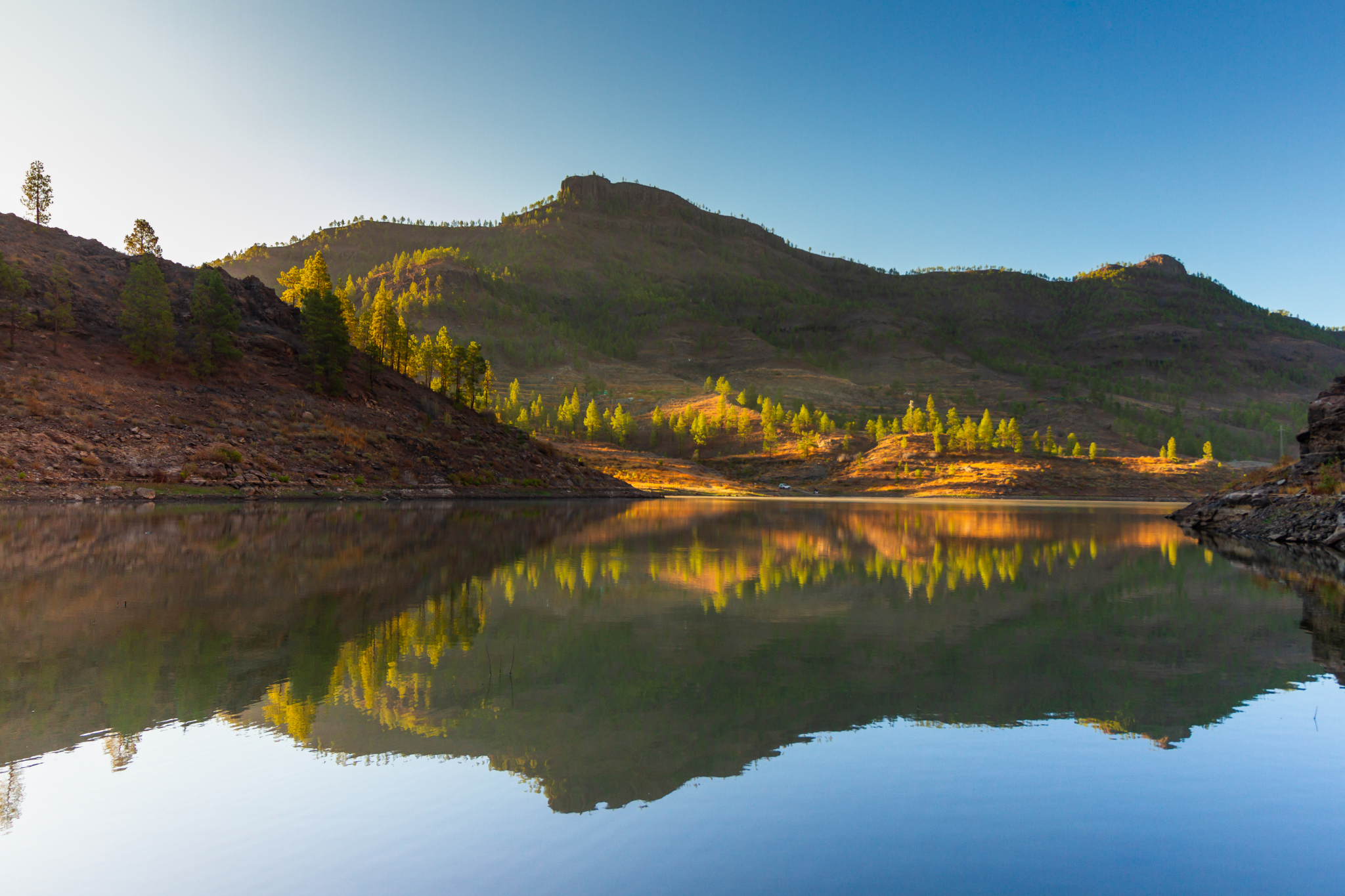 East Gran Canaria is a windy place and its windmills often generate more power than the island can use. When this happens they have to be switched off, thus wasting a huge amount of potential green energy.
East Gran Canaria is a windy place and its windmills often generate more power than the island can use. When this happens they have to be switched off, thus wasting a huge amount of potential green energy.
The solution is to use two of the island's big mountain reservoirs as a giant battery to store excess wind energy.
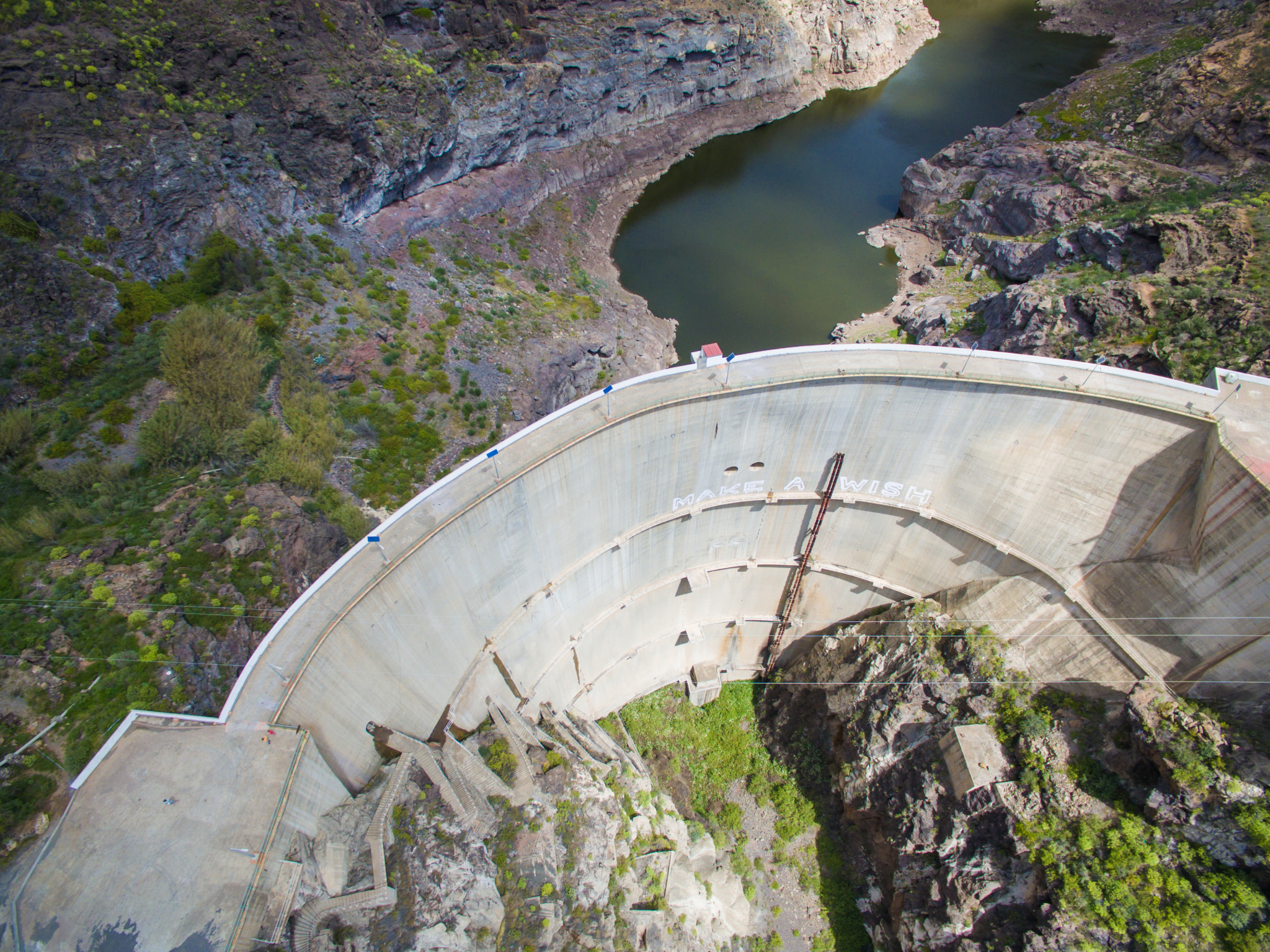 The way it works is very simple: Excess power generated from windmills pumps recycled water up to the Presa de Chira reservoir. When extra energy is needed this water runs down through a rock tunnel and drives turbines to make electricity. The water is stored in the lower Presa de Soria. From here it can either be used to water farmland, or pumped back up the hill when there is an excess of wind energy.
The way it works is very simple: Excess power generated from windmills pumps recycled water up to the Presa de Chira reservoir. When extra energy is needed this water runs down through a rock tunnel and drives turbines to make electricity. The water is stored in the lower Presa de Soria. From here it can either be used to water farmland, or pumped back up the hill when there is an excess of wind energy.
It's a clever and green way to reduce the island's dependence on burning oil to make electricity.
 However, the project is not popular with some of the islands ecologists who say it will damage pristine areas of the island (there will be some pylons) disturb the locals (the tunnel and turbines need some blasting work) and will be a for-profit operation (a Spanish power company has the concession).
However, the project is not popular with some of the islands ecologists who say it will damage pristine areas of the island (there will be some pylons) disturb the locals (the tunnel and turbines need some blasting work) and will be a for-profit operation (a Spanish power company has the concession).
Another complaint is that alternatives to the water battery could be better. However, these rely on experimental new tech such as hydrogen generation that just isn't ready to go.
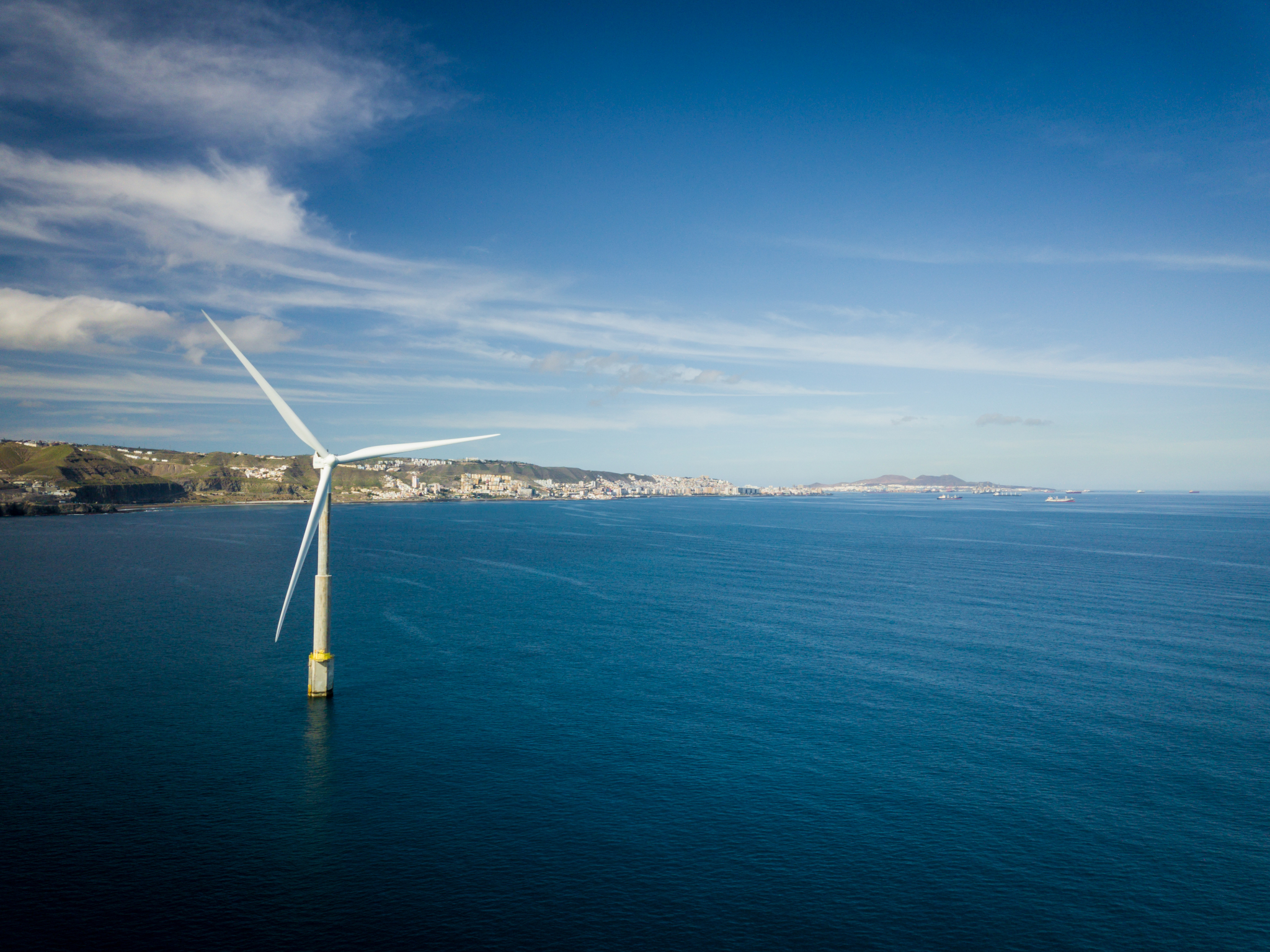 In balance we at Gran Canaria Info believe that the Chirea Soria water battery is a good idea.
In balance we at Gran Canaria Info believe that the Chirea Soria water battery is a good idea.
It means that at least half the island's electricity will be wind-generated (and that's with the island's current turbines). With offshore wind and solar power added, it could allow the island to go completely green.
Green energy research in Gran Canaria
 As you drive north from the airport to Las Palmas you see a huge grey square floating in the sea. This is the PLOCAN marine research station dedicated to investigating new ways to generate wind and wave power in the ocean. The Canary Islands also have experimental offshore wind farms,solar energy plants and a whole range of other green energy projects. With the ocean, wind and sunshine of the Canary Islands, it is a matter of time before we become energy independent and no longer need to generate carbon to keep the lights on.
As you drive north from the airport to Las Palmas you see a huge grey square floating in the sea. This is the PLOCAN marine research station dedicated to investigating new ways to generate wind and wave power in the ocean. The Canary Islands also have experimental offshore wind farms,solar energy plants and a whole range of other green energy projects. With the ocean, wind and sunshine of the Canary Islands, it is a matter of time before we become energy independent and no longer need to generate carbon to keep the lights on.
A green levy or eco tax on tourists
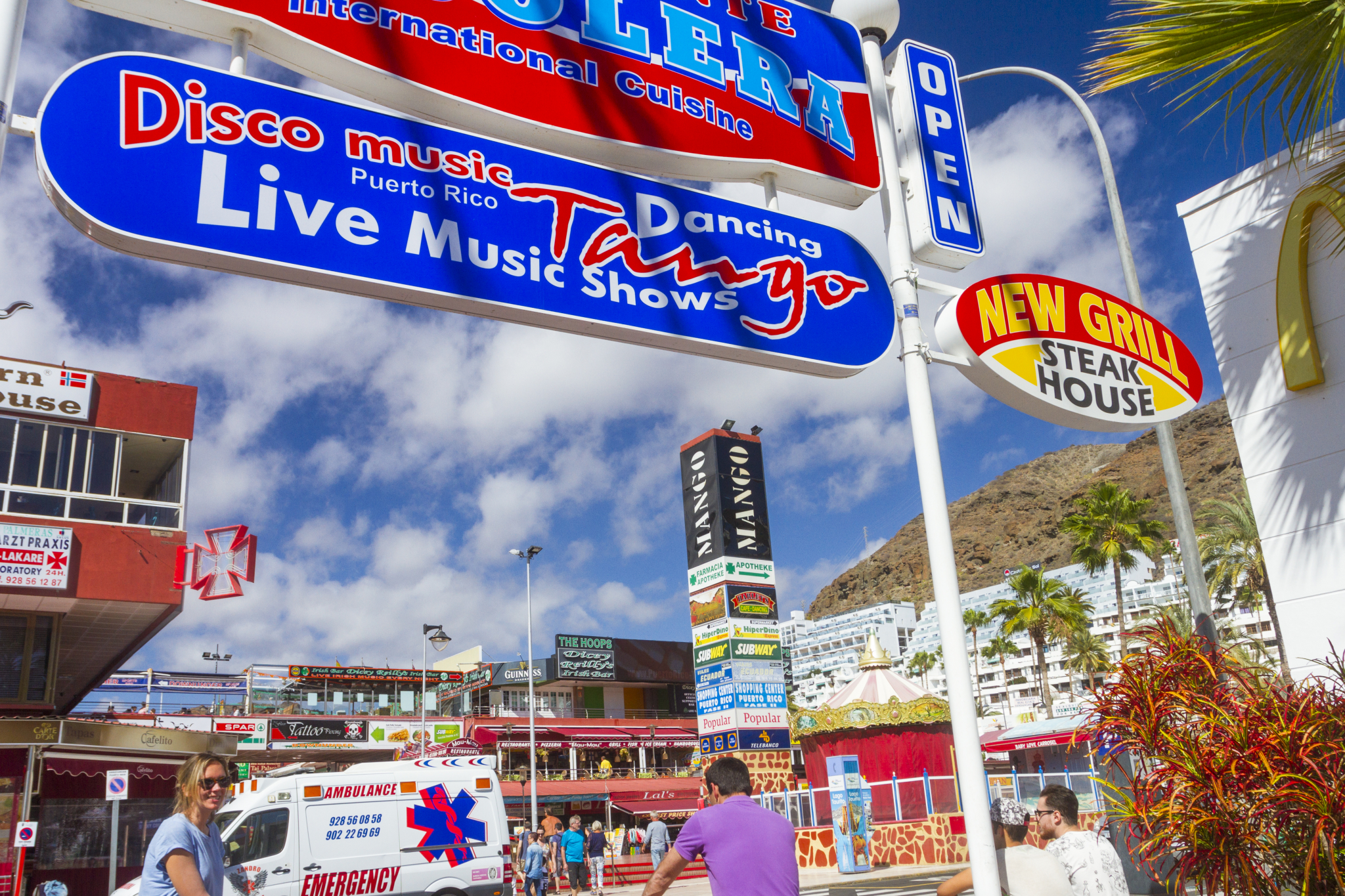 Tourism is an energy and resource-intensive business. Visitors want to reduce their carbon footprint but they also want fresh towels, green golf courses and air-conditioning. To compensate for the extra burden on the island's resources, politicians have suggested a small levy or tourist tax paid by every visitor. The funds would be invested, in things like reforestation, offshore reefs, low carbon transport and rewilding of abandoned farmland, to reduce the island's carbon footprint and counter the effects of tourism on the environment.
Tourism is an energy and resource-intensive business. Visitors want to reduce their carbon footprint but they also want fresh towels, green golf courses and air-conditioning. To compensate for the extra burden on the island's resources, politicians have suggested a small levy or tourist tax paid by every visitor. The funds would be invested, in things like reforestation, offshore reefs, low carbon transport and rewilding of abandoned farmland, to reduce the island's carbon footprint and counter the effects of tourism on the environment.
The benefit of this idea is that it would generate a large sum of money right away. The downsides are that it would be hard to collect, and some people would choose to go to other destinations that don't have a green levy. Another issue is how to decide who spends the money and on which projects. Politicians love coming up with ways to get more money but aren't always very good at spending it effectively.
Indirect taxes on visitor spend
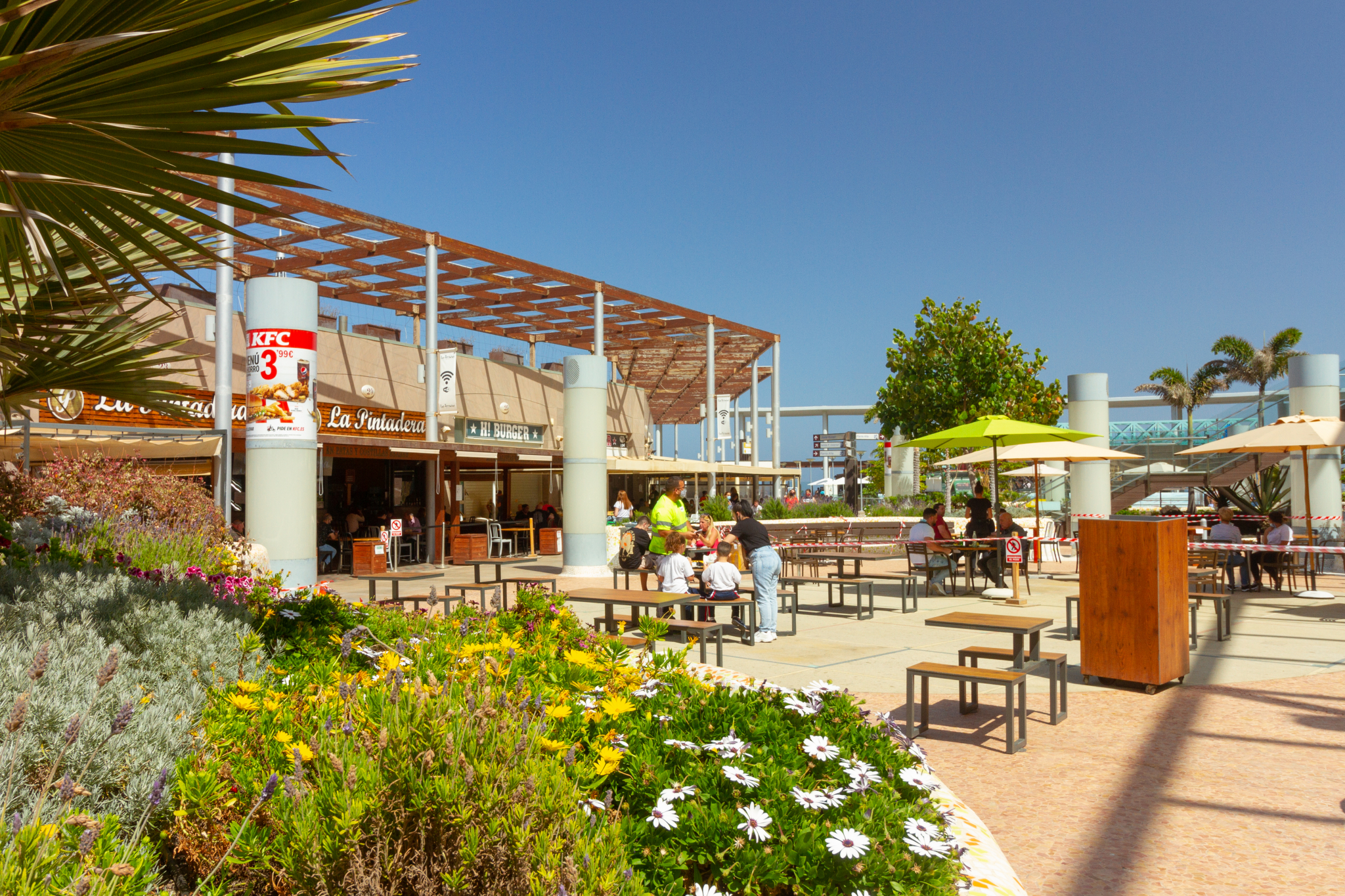 Instead of taxing every visitor, some think it would be better to add a green tax to certain things that damage the local environment or are cheap in the Canary Islands ton start with. For example, a surcharge on the price of petrol, or on luxury goods like perfume, premium alcohol and / or tobacco.
Instead of taxing every visitor, some think it would be better to add a green tax to certain things that damage the local environment or are cheap in the Canary Islands ton start with. For example, a surcharge on the price of petrol, or on luxury goods like perfume, premium alcohol and / or tobacco.
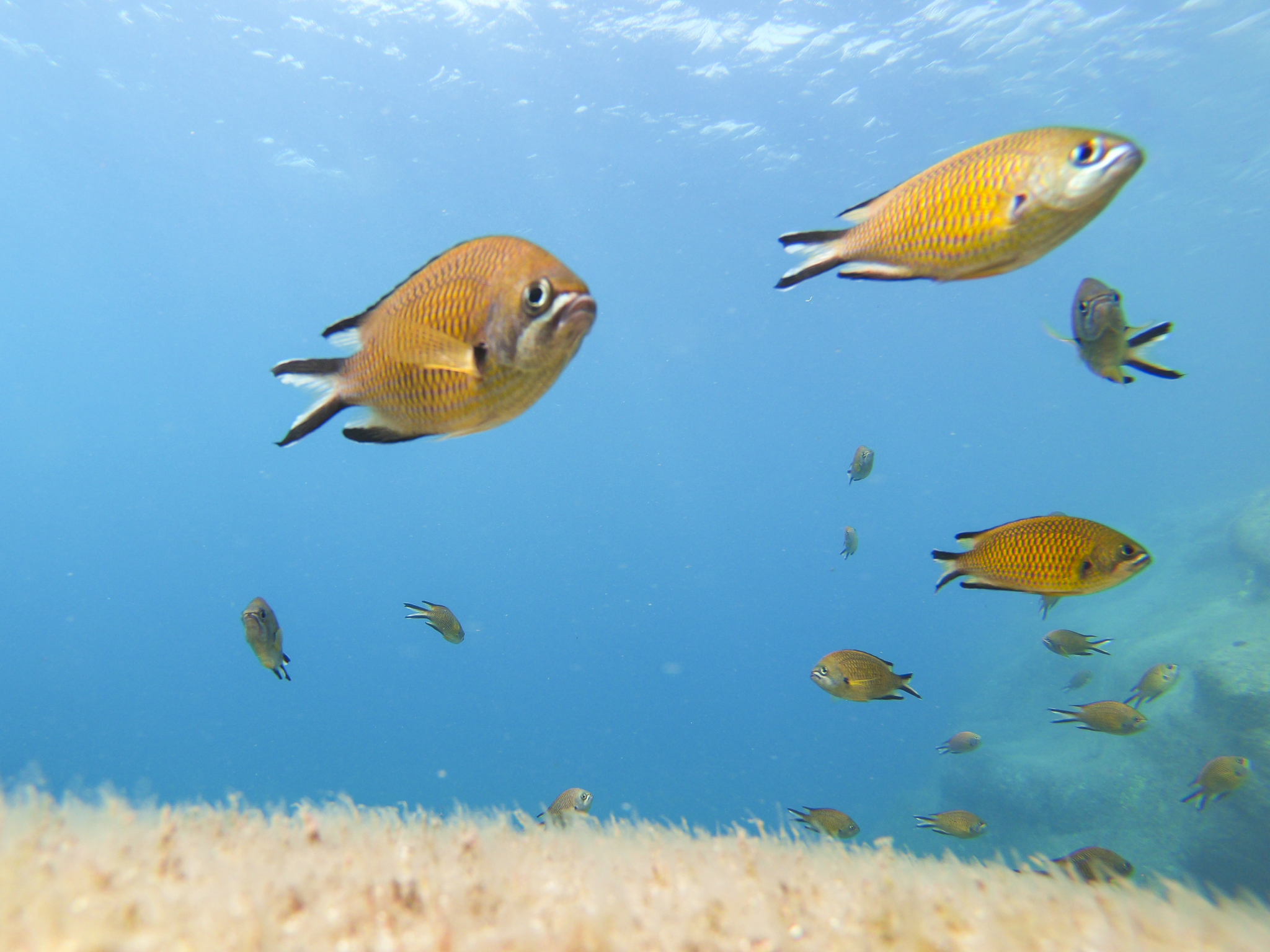 Or, what if every hotel and large tourism business in the Canary Islands chose a carbon offset project and agreed to use a percentage of their profits to funding it. They could then show their guests and customers exactly what they were doing to reduce the environmental income of their holidays. For example sponsoring a specific rewilding or reforestation project, or contributing to an artificial offshore reef to increase marine biomass. Visitors would be able to watch a live fed of life on the reef that their hotel sponsors. Maybe on those silly giant iPads that every hotel reception has but nobody uses.
Or, what if every hotel and large tourism business in the Canary Islands chose a carbon offset project and agreed to use a percentage of their profits to funding it. They could then show their guests and customers exactly what they were doing to reduce the environmental income of their holidays. For example sponsoring a specific rewilding or reforestation project, or contributing to an artificial offshore reef to increase marine biomass. Visitors would be able to watch a live fed of life on the reef that their hotel sponsors. Maybe on those silly giant iPads that every hotel reception has but nobody uses.
Carbon Offset Schemes like reforestation and rewilding
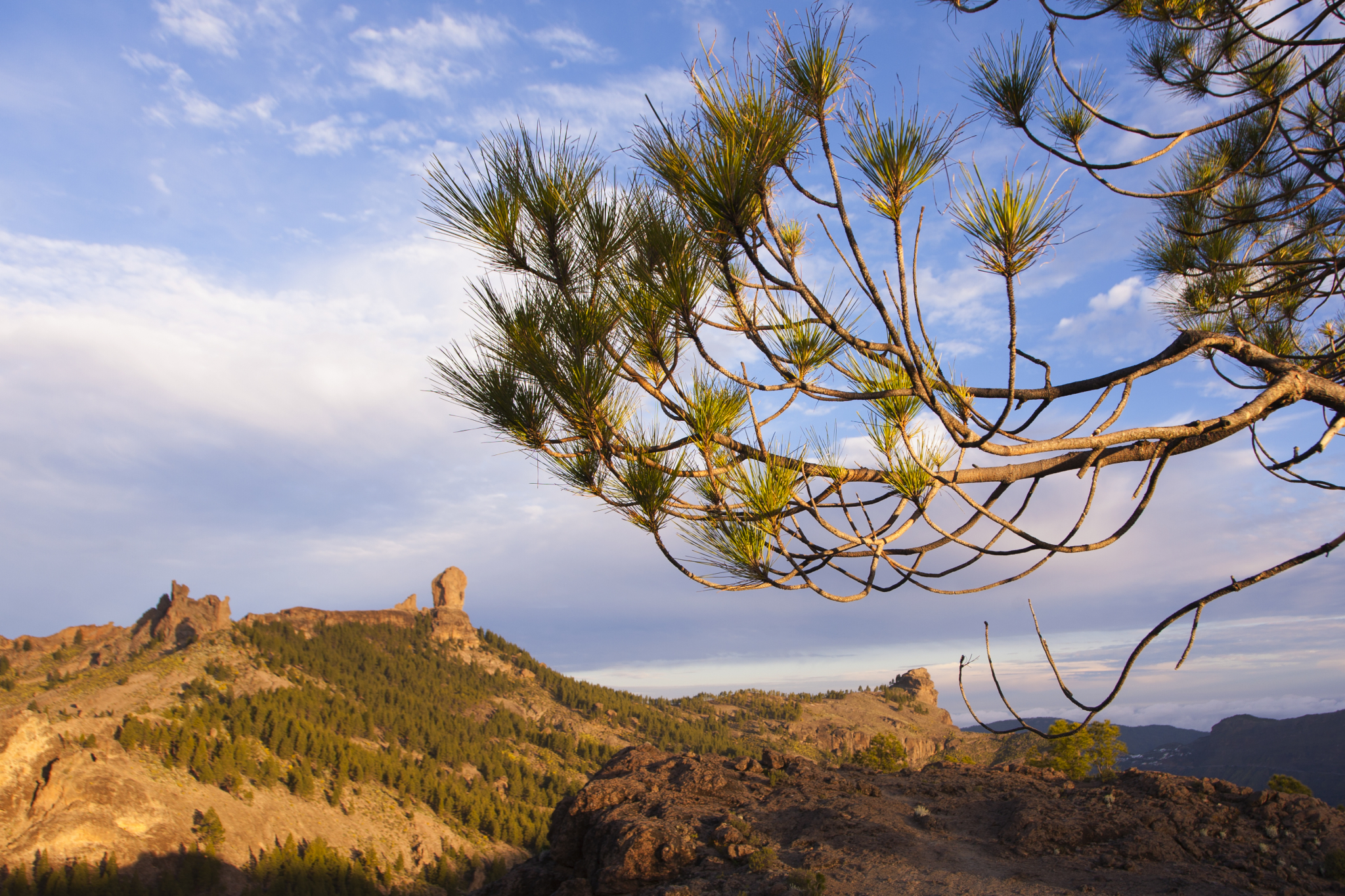 However it is paid for, rewilding and reforestation are going to be a major way that Gran Canaria offsets the carbon generated by visitors. The island now has 20,000 hectares of forest but once had over 150,000 hectares of pine, laurel, tree heath, wax myrtle and olive forests. Some of this is now occupied by towns, roads and farmland but there is a lot of space for replanting the forests.
However it is paid for, rewilding and reforestation are going to be a major way that Gran Canaria offsets the carbon generated by visitors. The island now has 20,000 hectares of forest but once had over 150,000 hectares of pine, laurel, tree heath, wax myrtle and olive forests. Some of this is now occupied by towns, roads and farmland but there is a lot of space for replanting the forests.
Other rewilding projects could include returning the abandoned farmland of the east and south coast to their natural state with native palm trees and vegetation.
See our detailed guide to the reforesting of Gran Canaria.
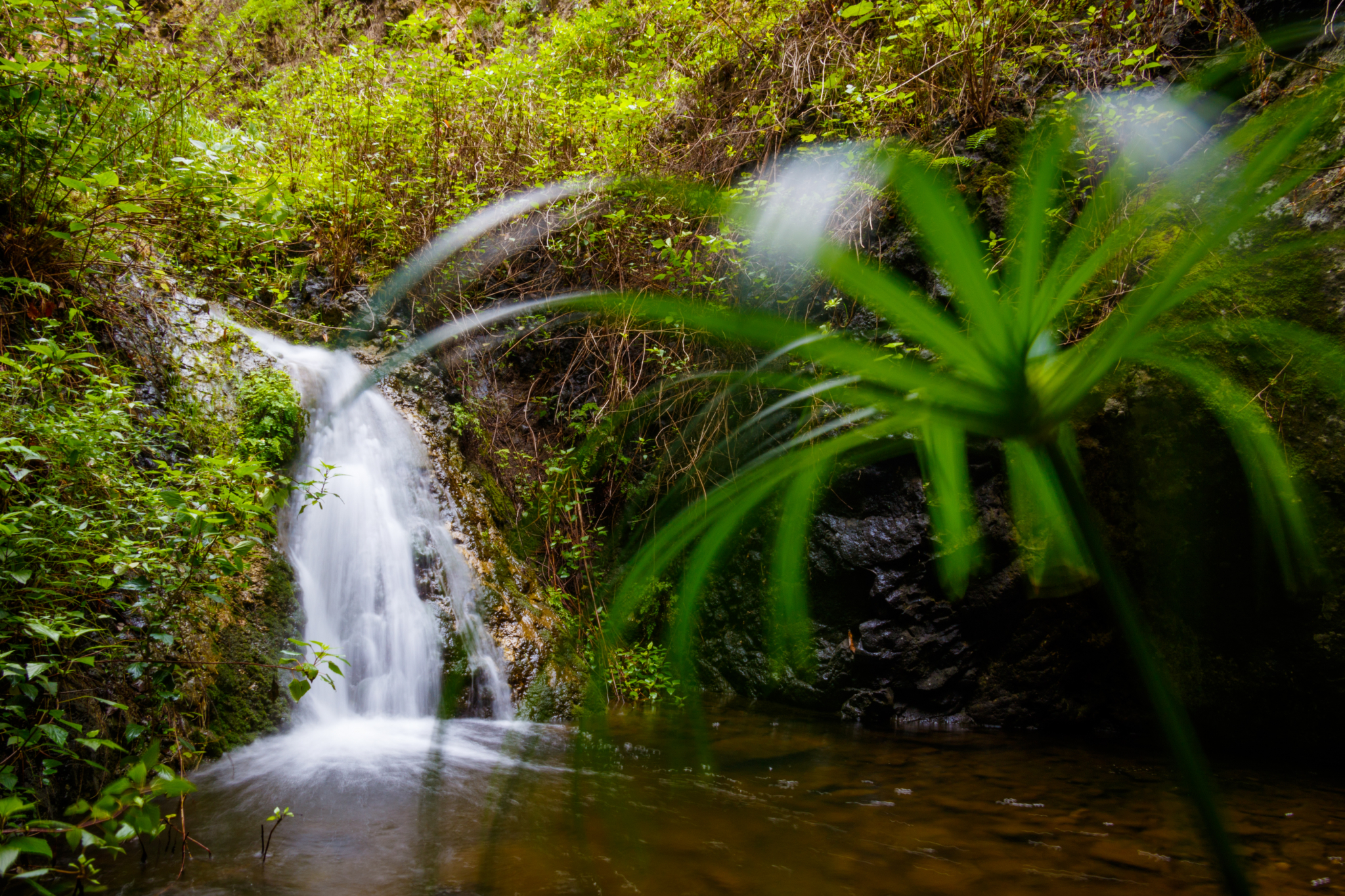 Another important idea is to return Gran Canaria's natural water to the island's valleys. Gran Canaria is not a dry island but most of its water is currently piped from source to banana and tomato farms. It would be far more valuable flowing free to created natural firebreaks and new areas of natural beauty such as streams and waterfalls.
Another important idea is to return Gran Canaria's natural water to the island's valleys. Gran Canaria is not a dry island but most of its water is currently piped from source to banana and tomato farms. It would be far more valuable flowing free to created natural firebreaks and new areas of natural beauty such as streams and waterfalls.
Low carbon transport and travel
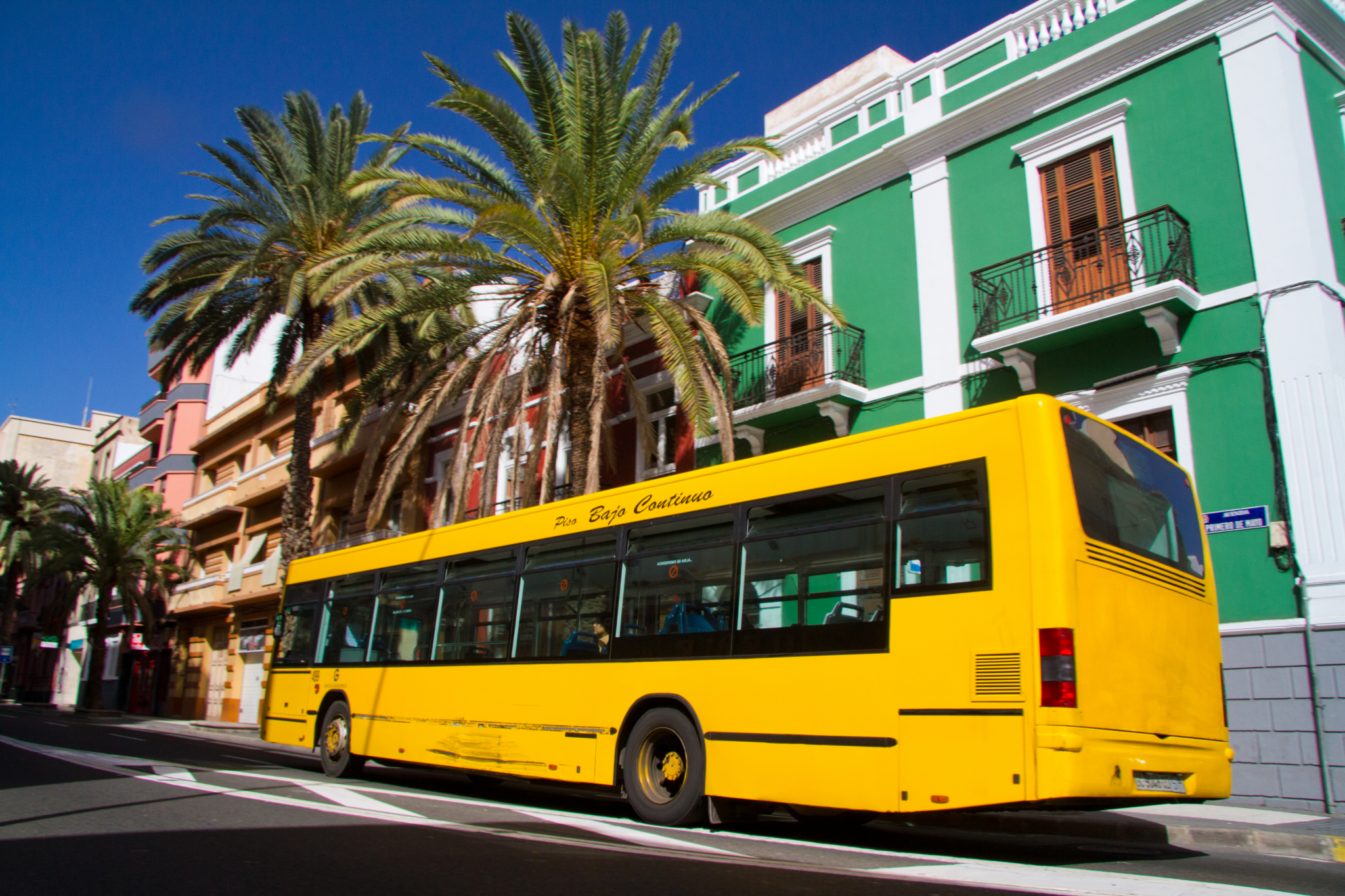 For visitors to Gran Canaria, using public transport, taking care with water and electricity use and eating only sustainable meat (such as grass-fed Spanish or Uruguayan beef) are small but significant ways to reduce their carbon footprint. Here's a good list of ways to reduce the impact of your next holiday.
For visitors to Gran Canaria, using public transport, taking care with water and electricity use and eating only sustainable meat (such as grass-fed Spanish or Uruguayan beef) are small but significant ways to reduce their carbon footprint. Here's a good list of ways to reduce the impact of your next holiday.
Consuming local produce such as wine, cheese, fruits and vegetables also contributes to reducing emissions on imports and supporting rural life in Gran Canaria.
If you want to do more, then there is a local charity that does a superb job...
Foresta: The Gran Canaria reforestation charity
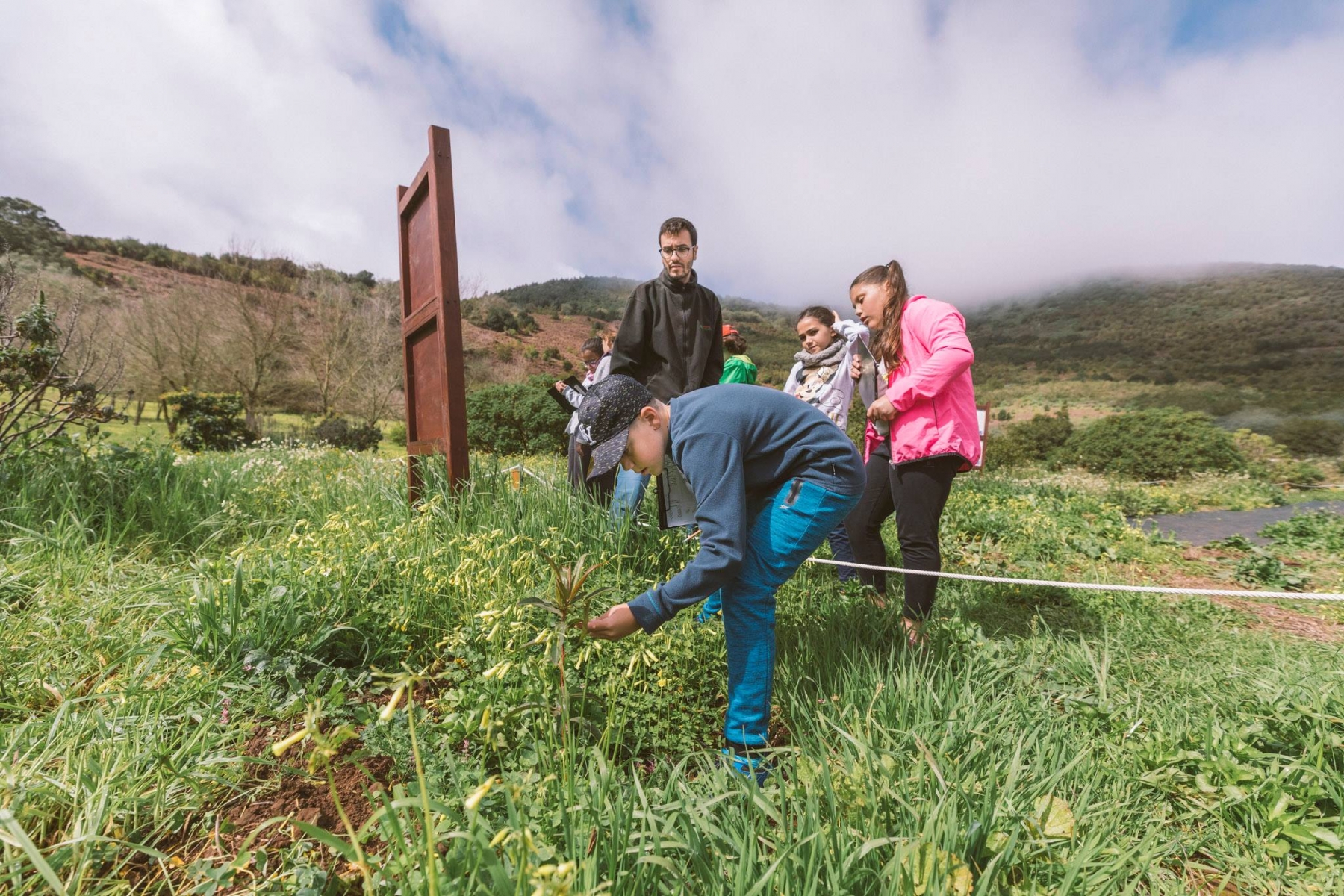 The Foresta Foundation is dedicated to replanting all of Gran Canaria's primeval forests in a sustainable and fire-safe way. It plants mixed forests of native species making sure that the right trees go in the right places. This makes the forests grow faster and also makes them more resistant to forest fires and droughts.
The Foresta Foundation is dedicated to replanting all of Gran Canaria's primeval forests in a sustainable and fire-safe way. It plants mixed forests of native species making sure that the right trees go in the right places. This makes the forests grow faster and also makes them more resistant to forest fires and droughts.
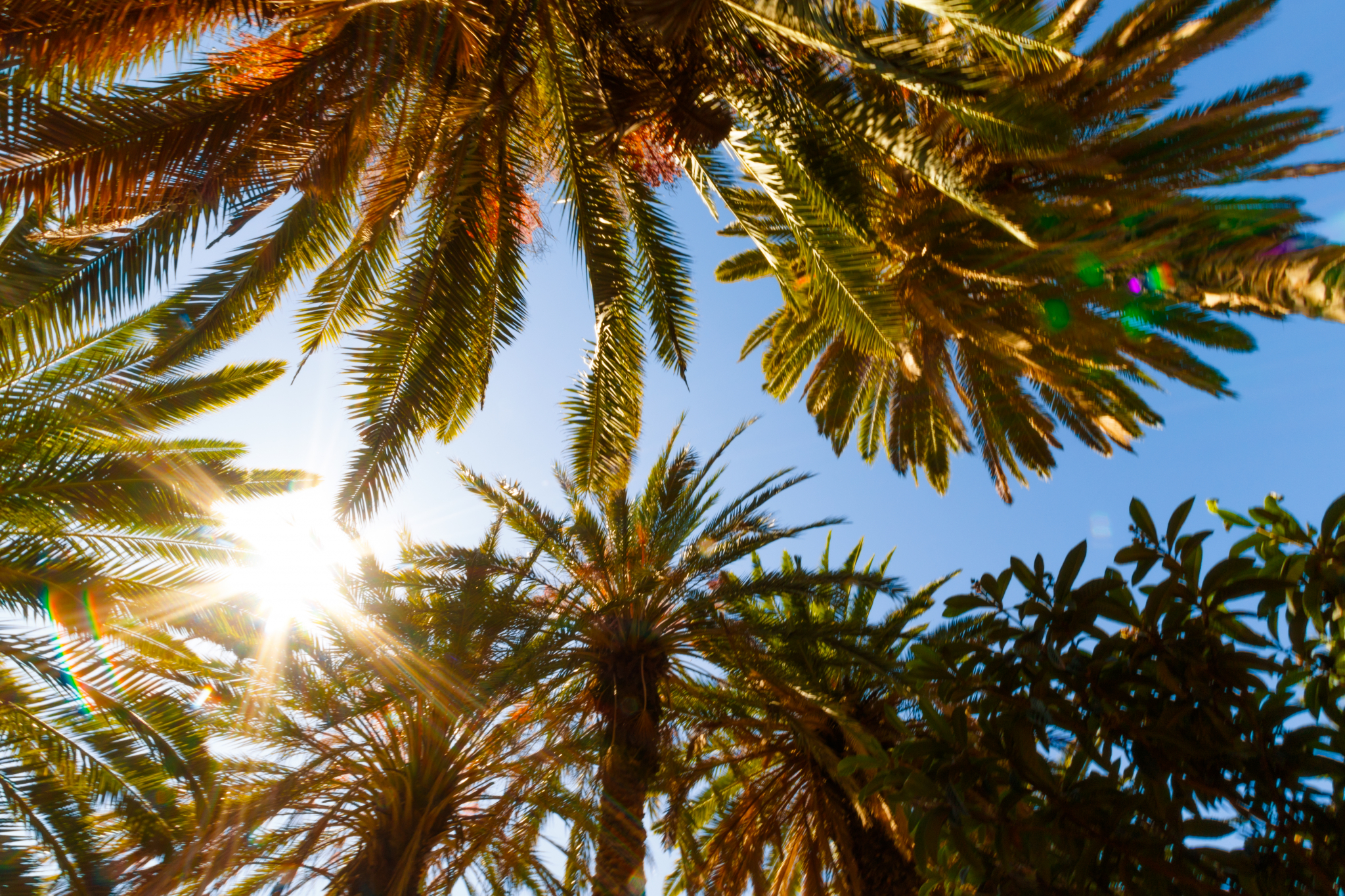 To offset the carbon footprint of your flight to and from Gran Canaria you can sponsor a tree via Foresta. It plants one native tree sapling per donation in an appropriate location and cares for it (rabbit-proof fencing, watering, etc) until it gets established. A mature tree can absorb 1000 kg of carbon dioxide during its lifetime, more than enough to offset the 650kg of carbon that each return flight to Gran Canaria generates per person.
To offset the carbon footprint of your flight to and from Gran Canaria you can sponsor a tree via Foresta. It plants one native tree sapling per donation in an appropriate location and cares for it (rabbit-proof fencing, watering, etc) until it gets established. A mature tree can absorb 1000 kg of carbon dioxide during its lifetime, more than enough to offset the 650kg of carbon that each return flight to Gran Canaria generates per person.
There are three main types of Gran Canaria airport transfer services, each with its own benefits, risks and price point. Here's our guide to them all, and a shameless plug for the in-house transfer service that helps keep the lights on at Gran Canaria Info's headquarters.
Man from pub with car
The cheapest airport transfer service is the 'man (or woman) from the pub with a car' service. This is operated by a Gran Canaria resident who picks people up in their own car from the airport. They often advertise in pubs or run pubs in resort areas, and get customers by word of mouth. They don't advertise online or in public because this type of service is 'under the radar'.
With the man with car model you are basically paying cash in hand for someone pretending to be your friend to pick you up from the airport (or drop you back). As such they will be parked in the public car park rather than in the public transport zone next to arrivals.
Legal transfer cars have blue license plates, a VTC aand SB sticker in the window, and their own parking zone at the airport. A legitimate driver does not have to pay a parking fee. Read more about the differences between legal and illegal transfers here.
This airport transfer service is often the cheapest option because the bloke with car does not have to pay for advertising and often doesn't pay business rates, taxes or professional insurance from their takings. They are cheap because they cut corners.
We don't really support this model of airport transfer service for two reasons. The first is that we don't know if a particular man with car is insured and / or a safe driver. The second is that we have no idea whether he pays anything back into the local Gran Canaria economy. We do know that informal transfers undermine the local drivers and companies who do pay their taxes and business fees.
Imagine the scandal in Puerto Rico if taxi drivers started selling tax-free beer to tourists!
The big branded airport transfer services
These are the services like Hoppa, Viva, Sun, etc.
These airport transfer services have large advertising budgets and websites that offer transfers from any airport. You book, pay upfront and when you walk through into arrivals, there is a driver with a sign waiting for you. The booking service takes a big chunk in commission and pays the rest to the company that owns the car and pays the driver.
Services like Hoppa and Viva never actually own the car or employ the driver that you meet. Nor do they have a help desk, or even employ any staff on the island. Instead they are based offshore and the savings they make mean that they caan spend huge amounts on advertising. Then they keep asking for lower prices from the drivers as they gain market share. None of the money they take in commission stays in Gran Canaria or any of the other destinations they offer.
There is very little difference between these services because they all use the same local companies to do the actual driving. A licensed local driver will reach the airport and pick up the next passenger on their list without even knowing which website they booked with. The driver is paid and the car insured by the local transport company that owns the cars, not by the booking service.
That said, all big branded services tend to be reasonably priced and are quite reliable. However, if something does go wrong there is nobody on the ground to sort it out. If a big transfer service drops the ball, then you are likely to be on your own, or at least face a long delay until someone at the call centre works out what happened.
Local Gran Canaria airport transfer services
 The transport companies that operate the cars and pay the drivers that do Gran Canaria airport transfers do take direct bookings. However they also work with local transfer services to handle international bookings. It is easier and just as economical for them to pay commission as it is to take bookings themselves.
The transport companies that operate the cars and pay the drivers that do Gran Canaria airport transfers do take direct bookings. However they also work with local transfer services to handle international bookings. It is easier and just as economical for them to pay commission as it is to take bookings themselves.
This is what we do at Gran Canaria Info. We work with exactly the same drivers and cars as all the branded transfer services. However, the commission we keep is much smaller than the wedge that big services pocket. The commission we earn for handling the booking helps us to keep improving Gran Canaria Info.
Gran Canaria Info's airport transfer service is reliable, fairly priced and is all operated from Gran Canaria. This means that if something does go wrong (delays, traffic, breakdowns) we are here to sort things out as quickly as possible.
What about buses and taxis at Gran Canaria airport?
The local Gran Canaria bus network is decent and you rarely have to wait more than half an hour before hopping on a bus to the main resorts or to Las Palmas. Just follow the bus stop signs at arrivals, then check Google maps for the next bus to your destination. Then take a taxi from the bus stop or station closest to your accommodation. For one person, or a couple, using the buses saves money but once there are three of you or more, a taxi or transfer often works out cheaper.
Taxis queue right outside the arrivals lounge at Gran Canaria airport. They are reasonably priced and you can normally just walk over and get one right away. However, there can be queues at peak times and prices rise late at night, on fiesta days and on Sundays. There is a limited supply of large taxis so if your group is bigger than four (three if the Covid Levels go up), then it is better to book a large vehicle with a local Gran Canaria transfer service. A transfer is always cheaper than using two taxis, and transfers are cheaper than the standard taxi meter rate for resorts like Mogán and Puerto Rico that are further from the airport.
So, there you have it. The facts about Gran Canaria airport transfers. Obviously we'd love you to use our own reliable service, or to book an excursion or boat trip with us but the decision, like the holiday, is all yours. Thank you for visiting Gran Canaria Info and we hope to see you in our Gran Canaria Info Facebook Group soon.
If you want to book the Gran Canaria Info airport transfer service, or a transfer back to the airport, you can do it here. Our service is reliable and well-priced and using it helps us keep the lights on at GCI headquarters.
Gran Canaria Info recommends:
- Default
- Title
- Date
- Random

